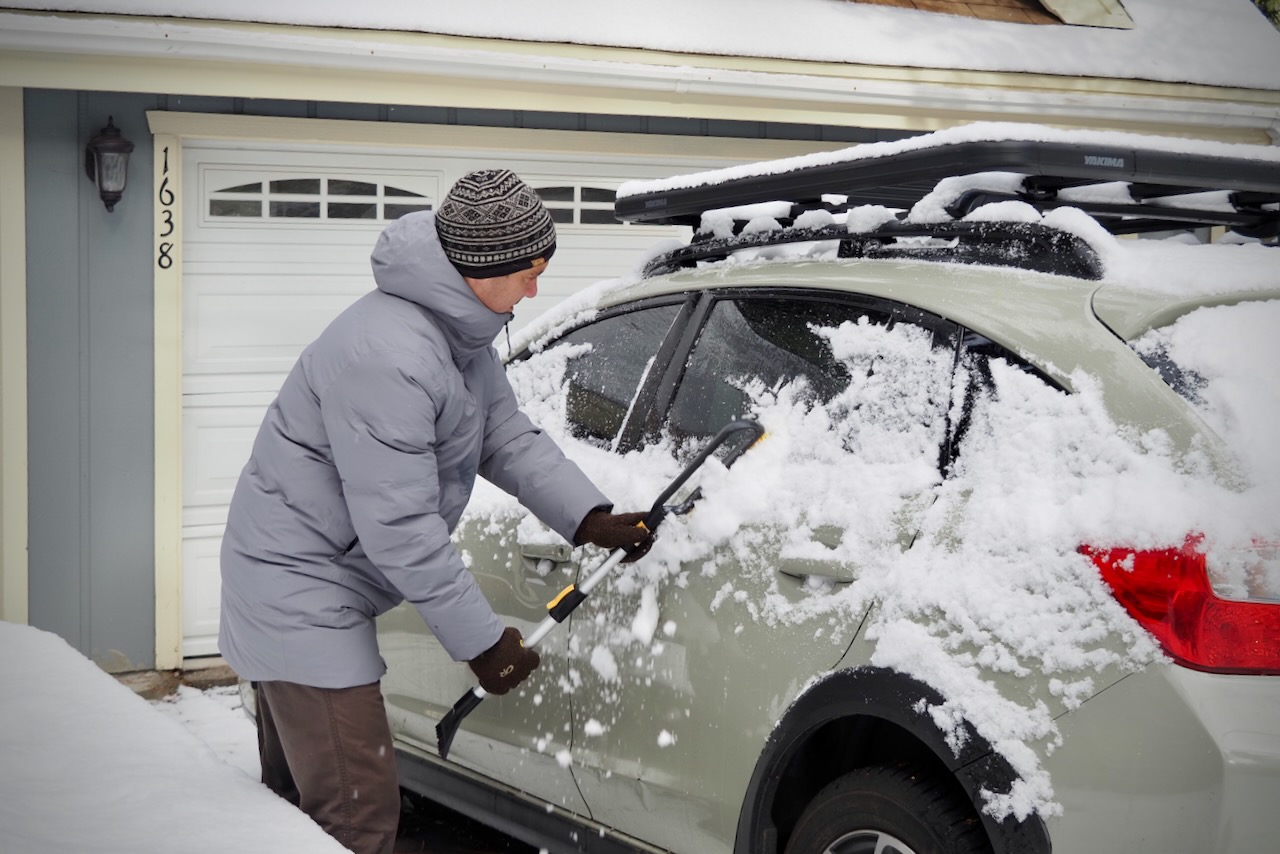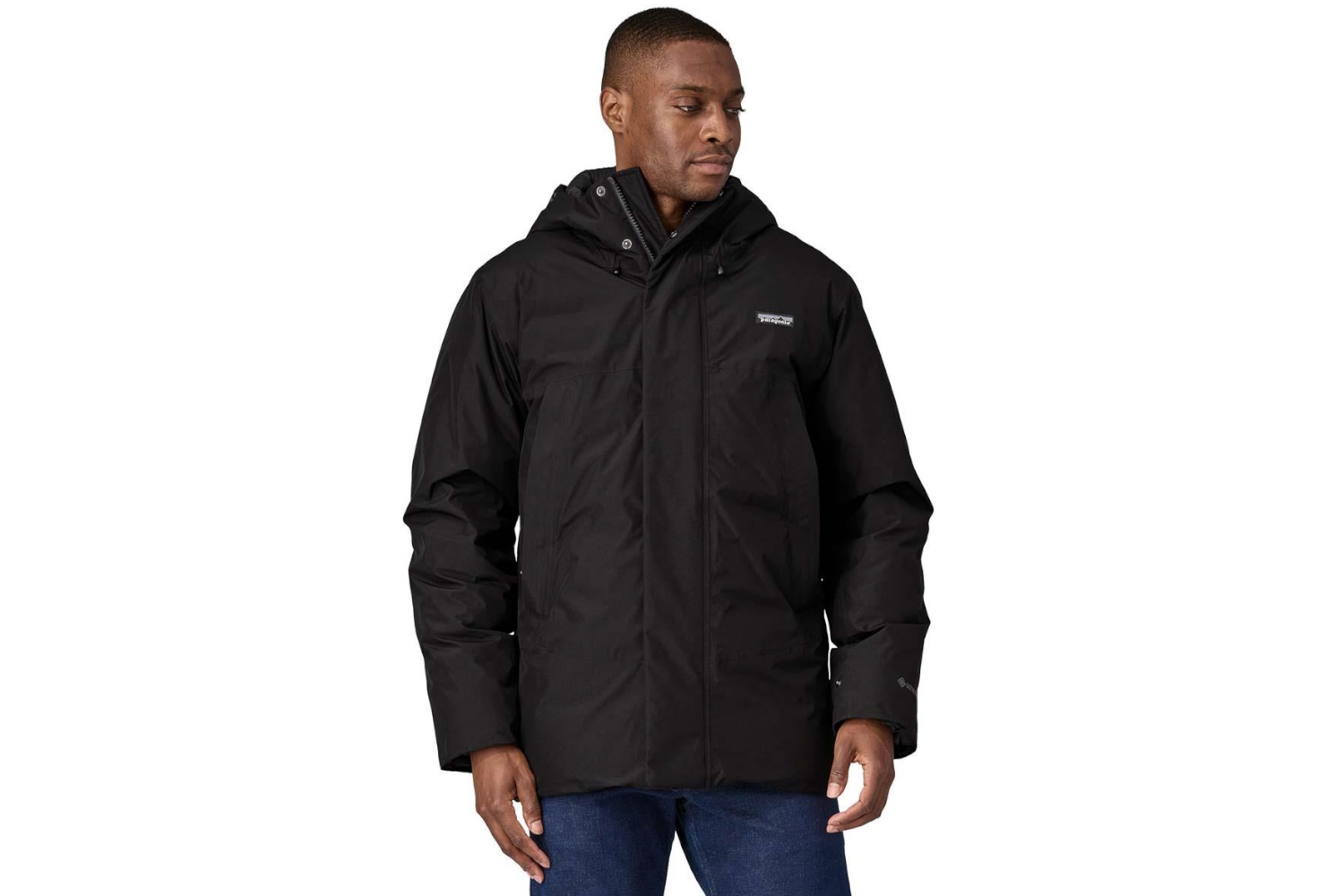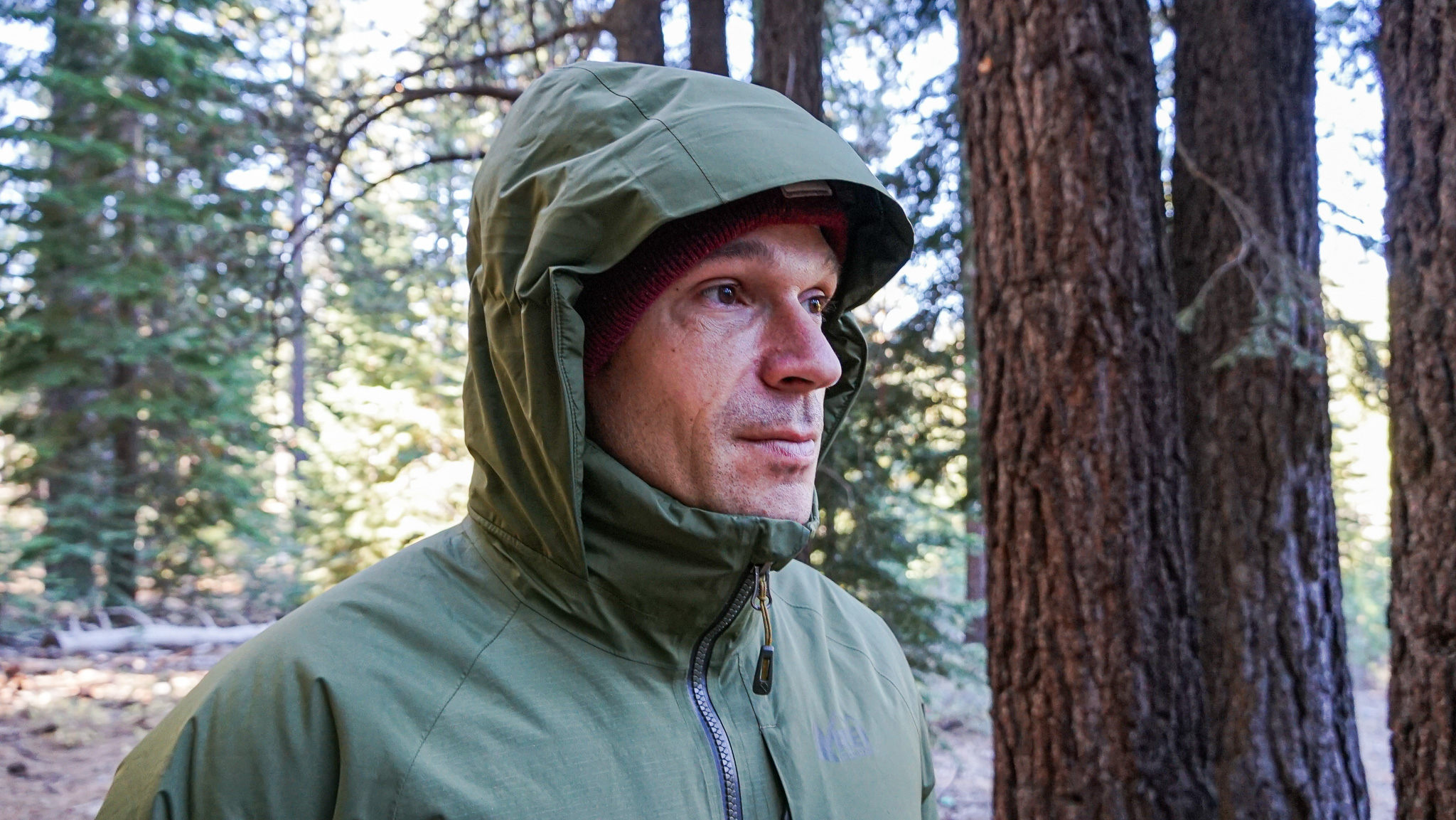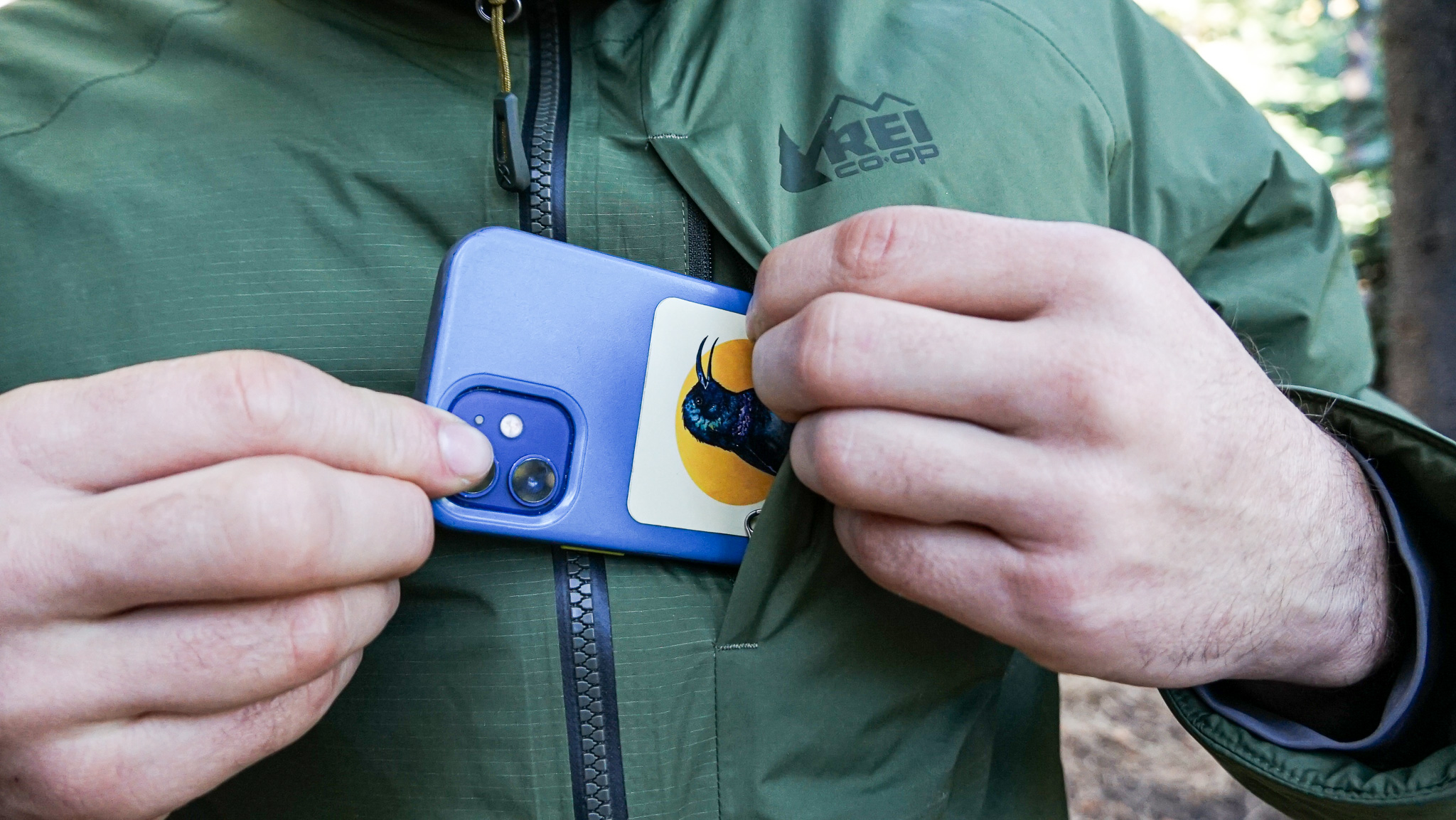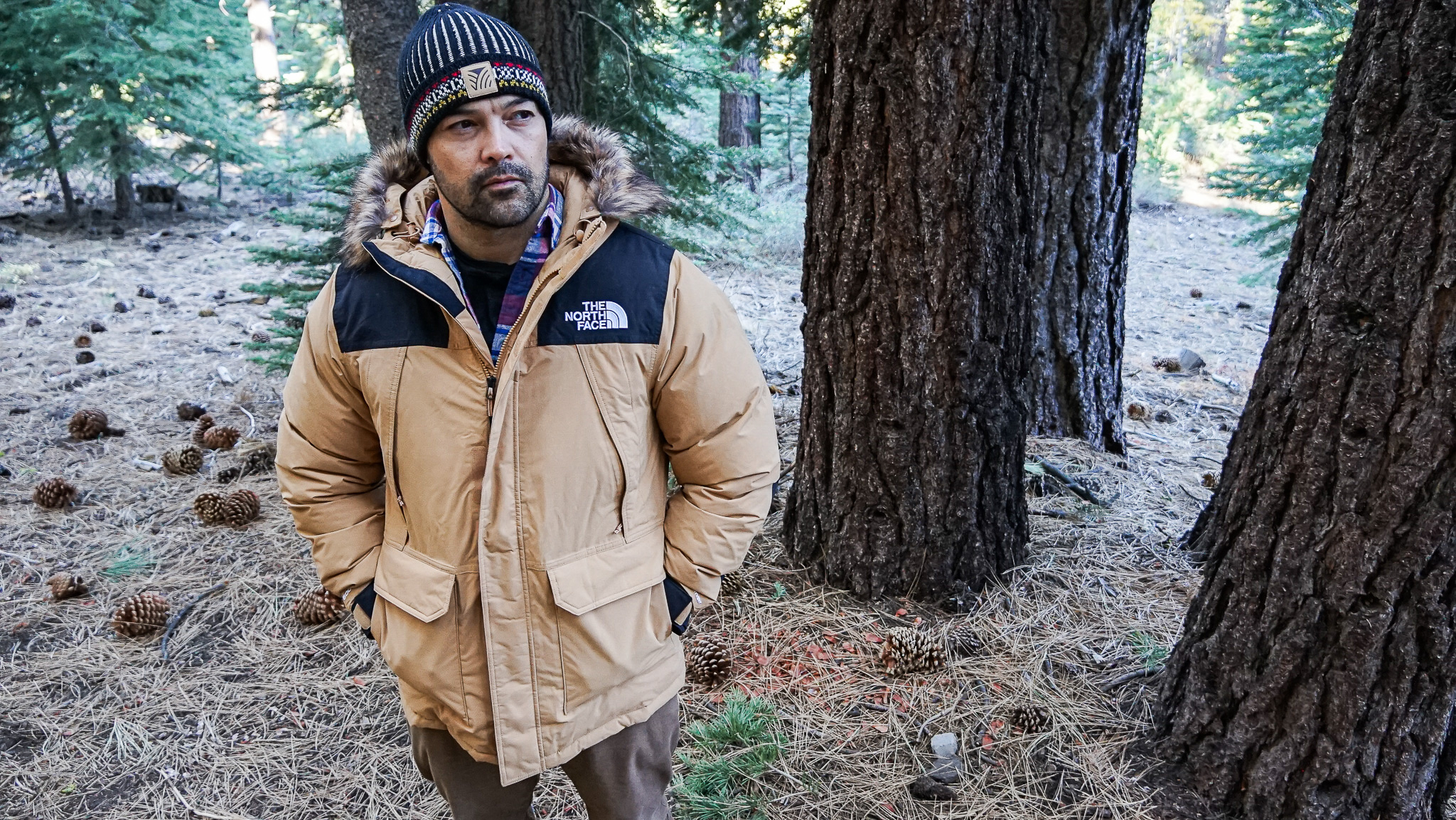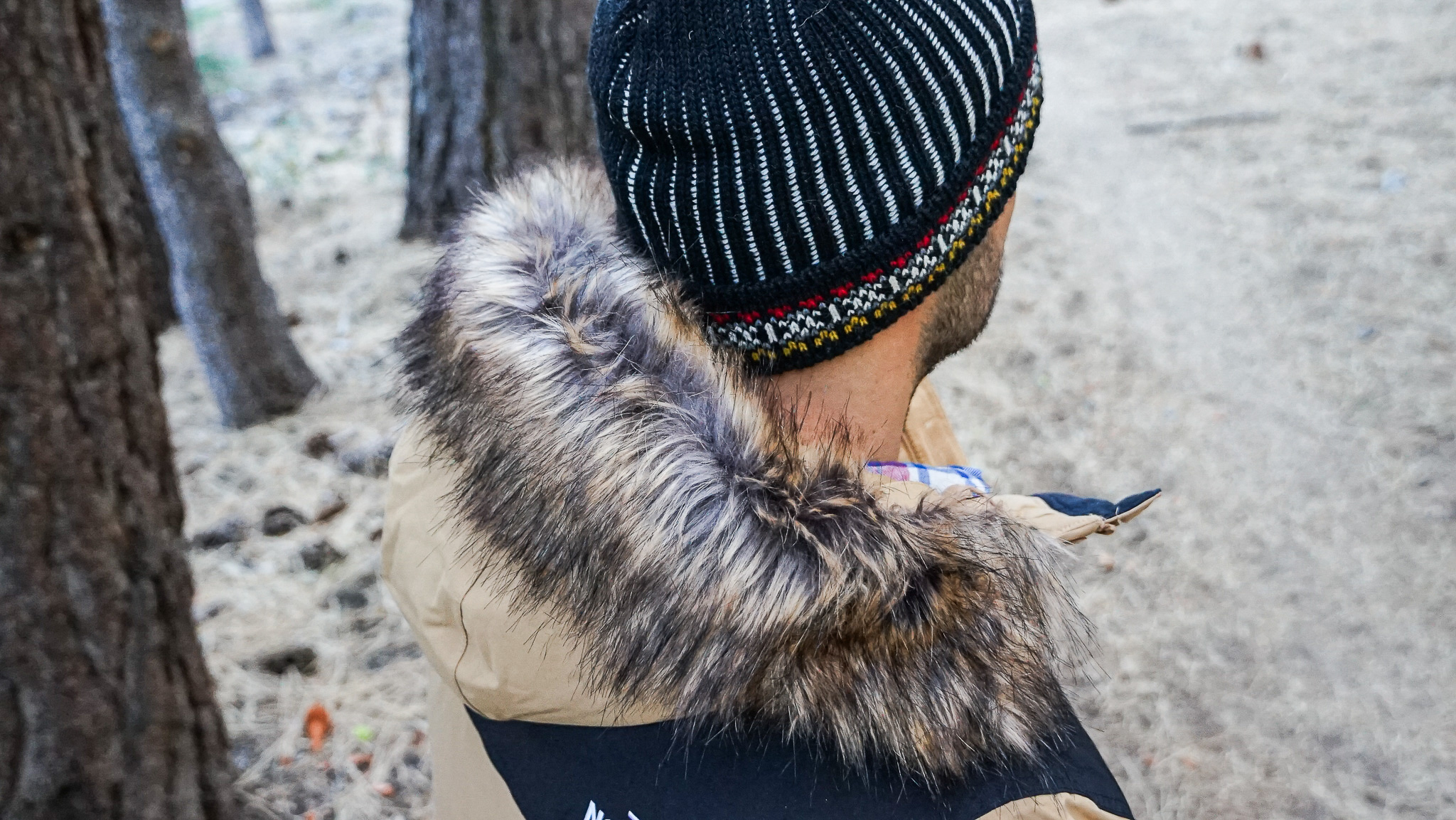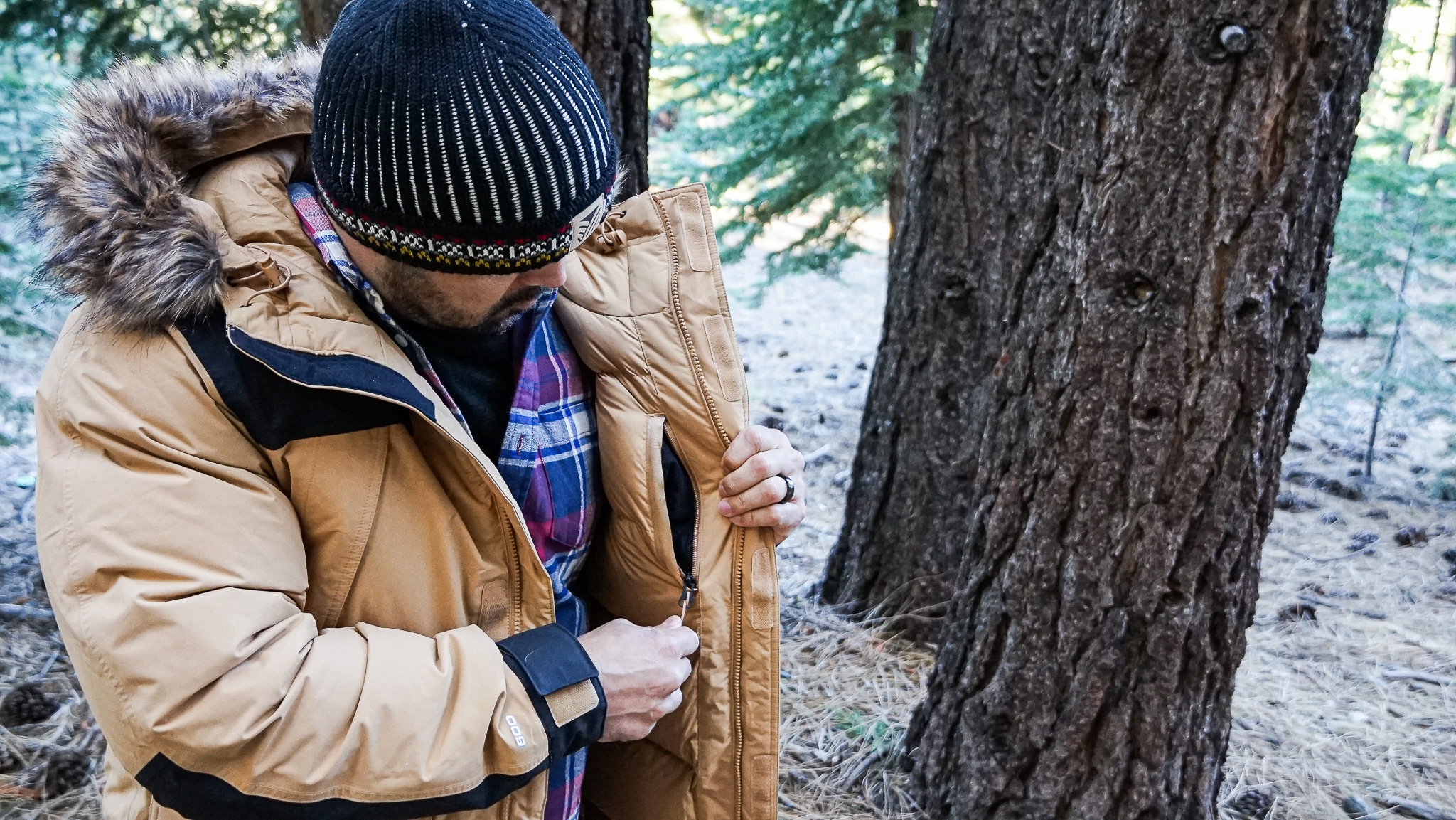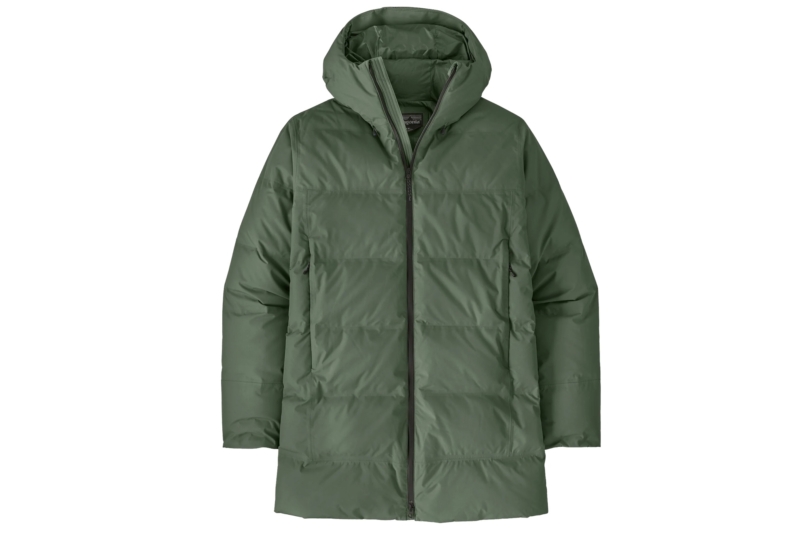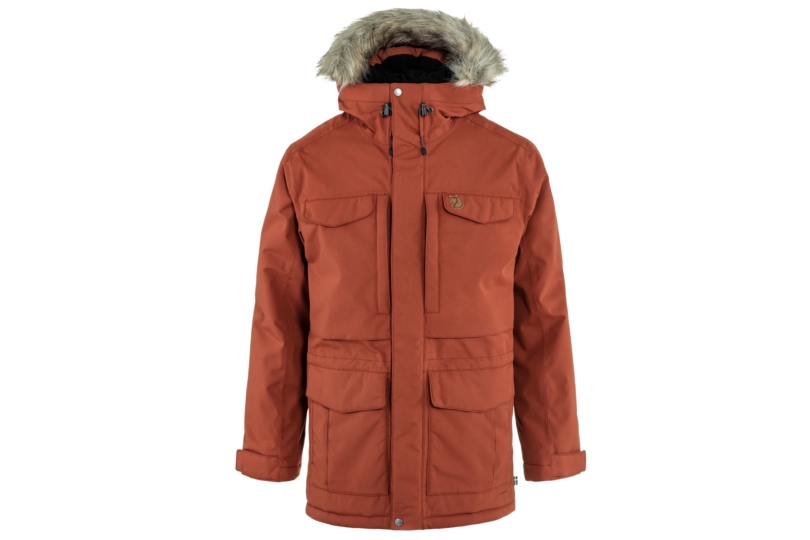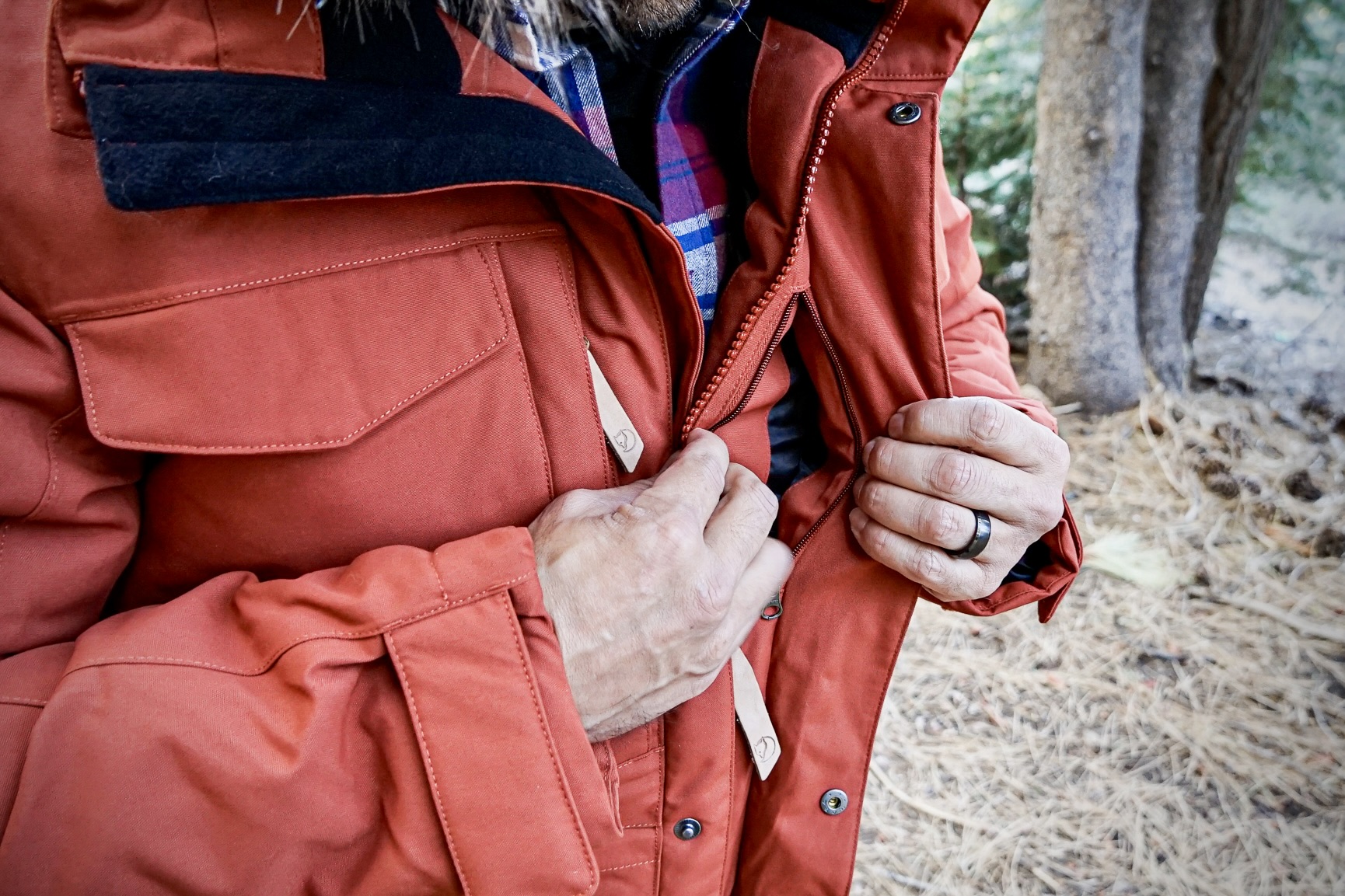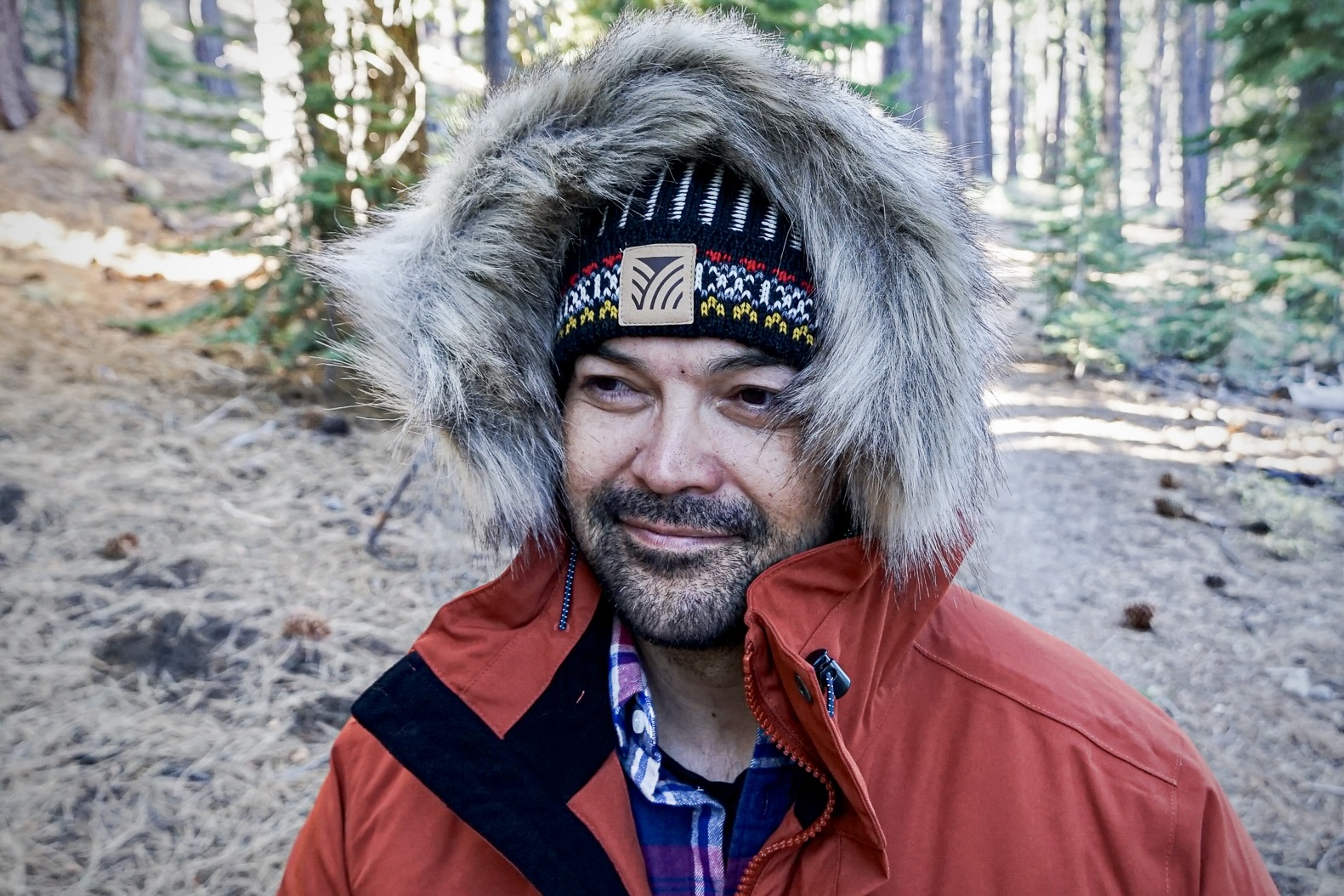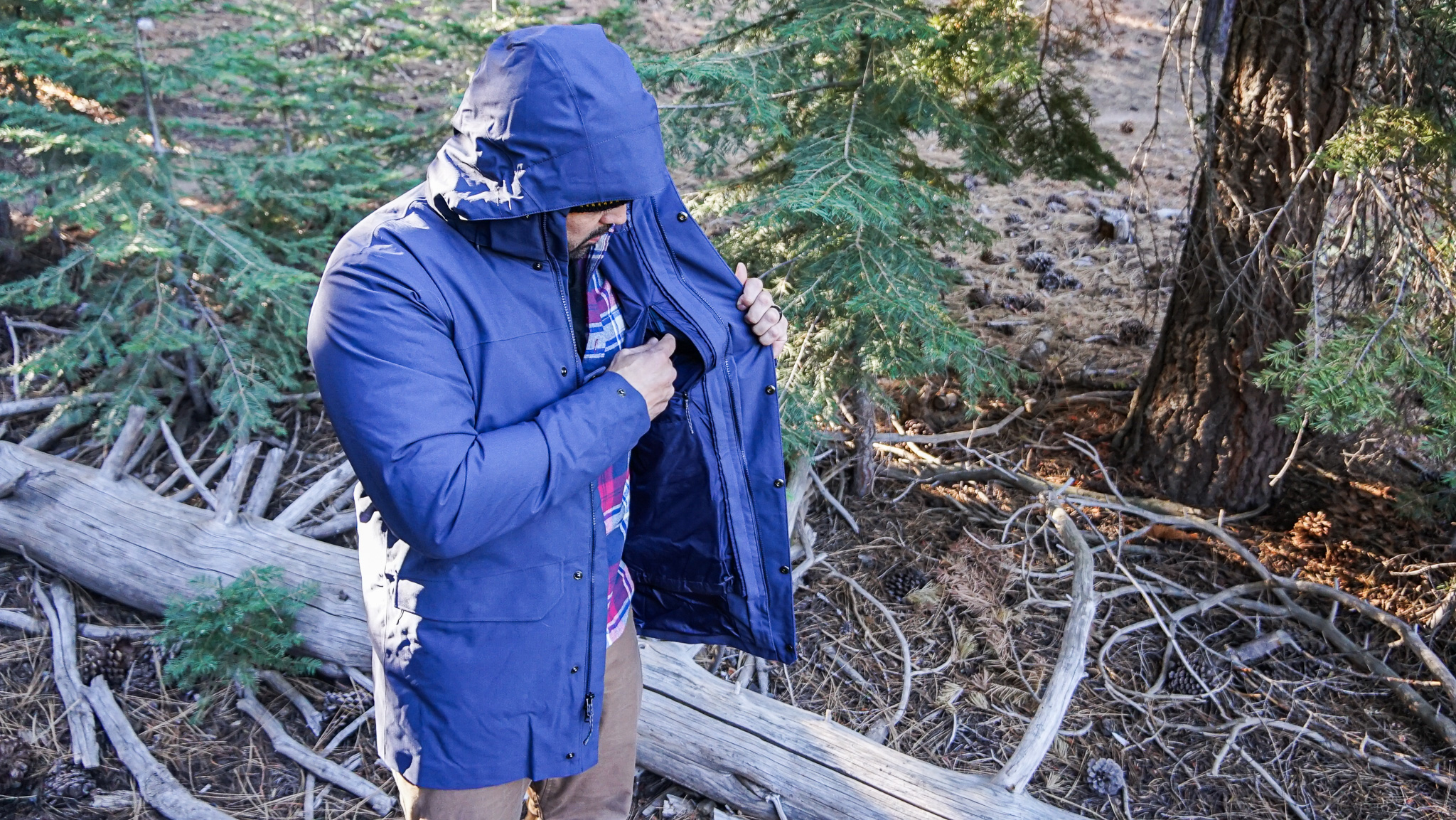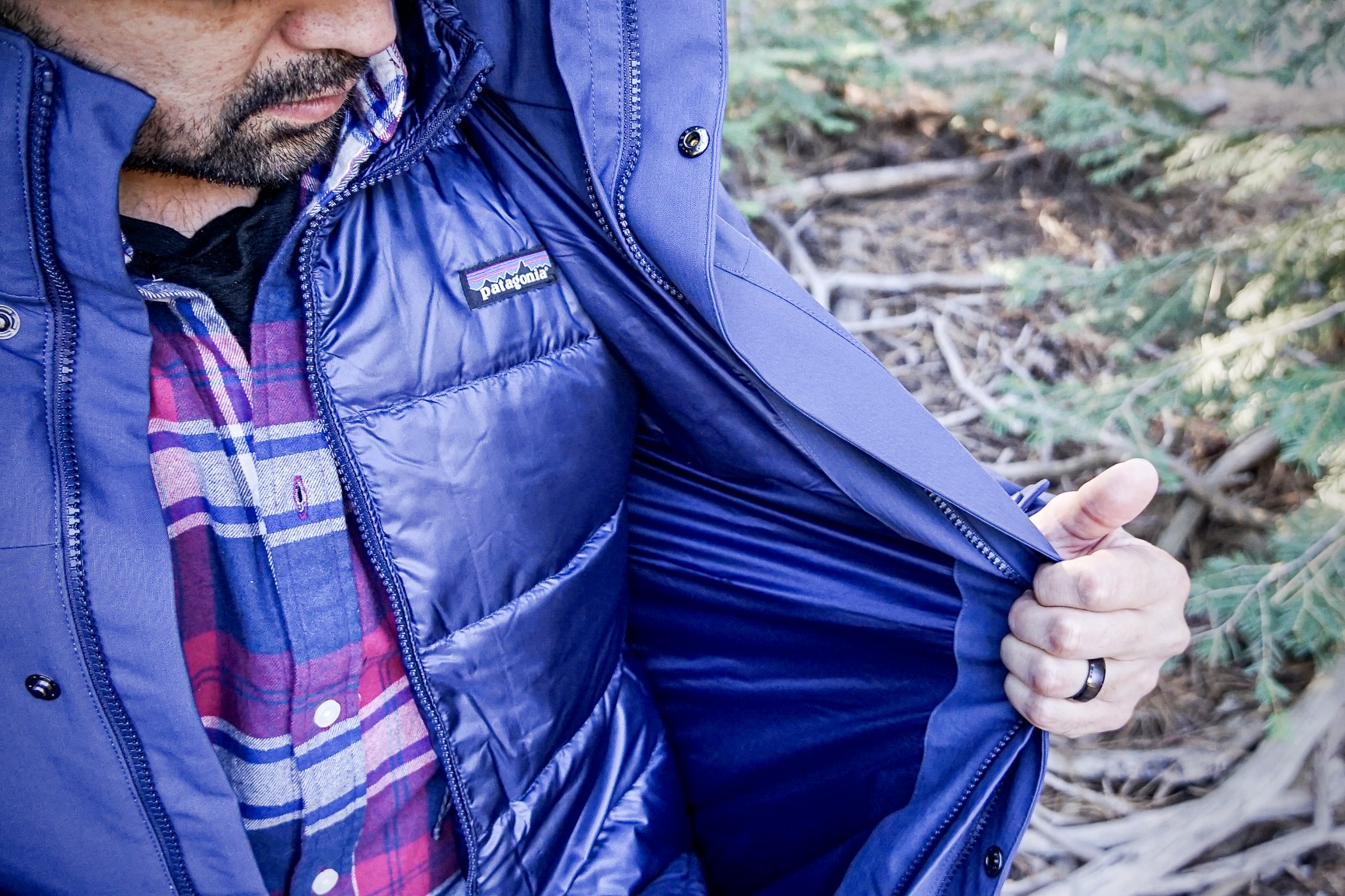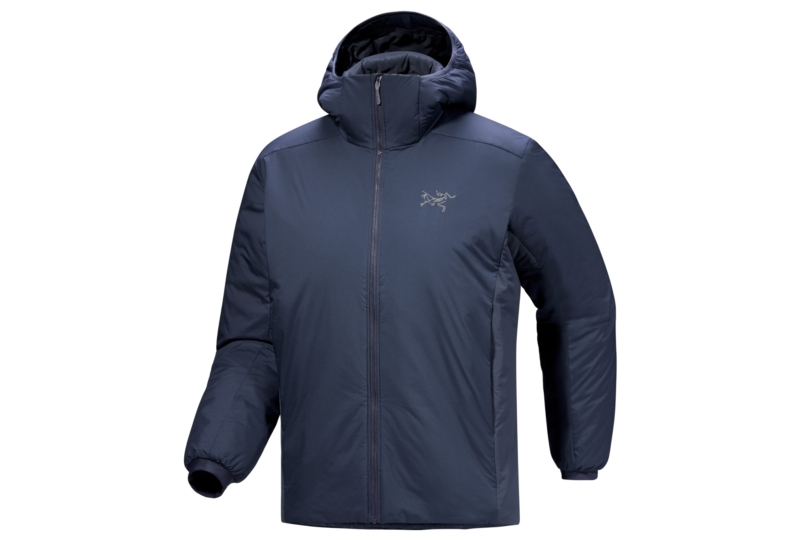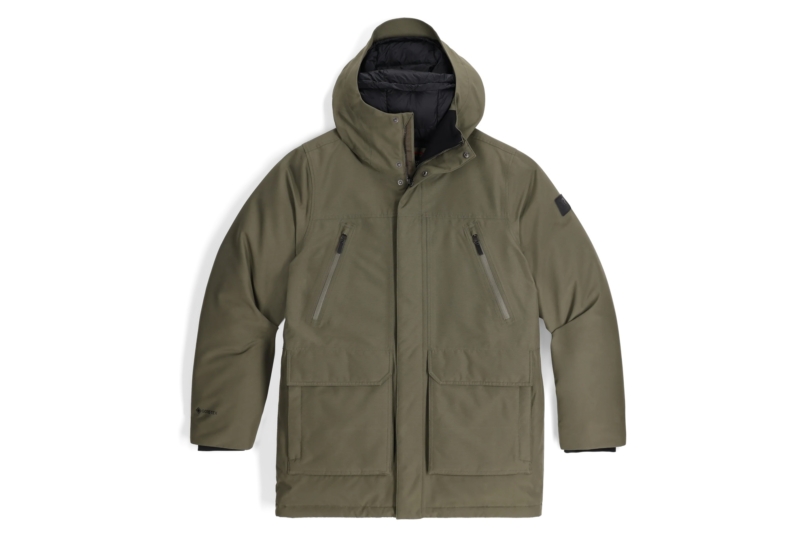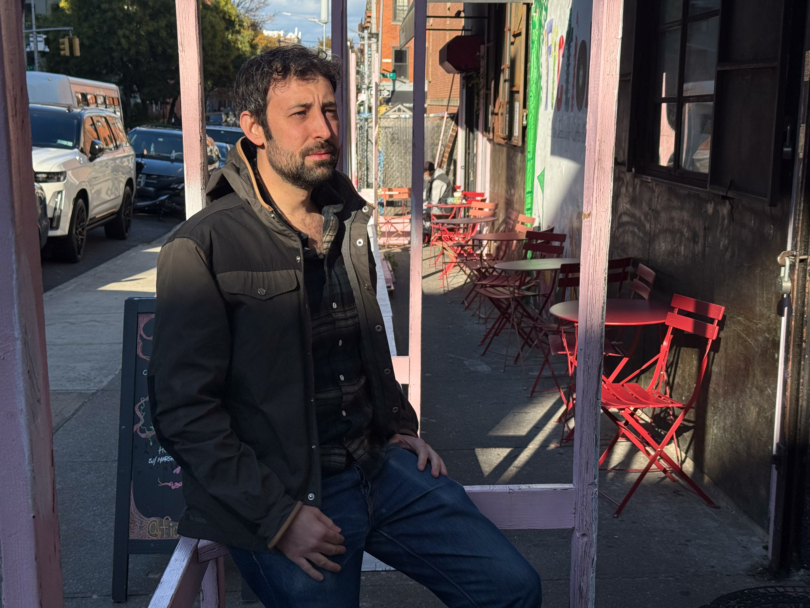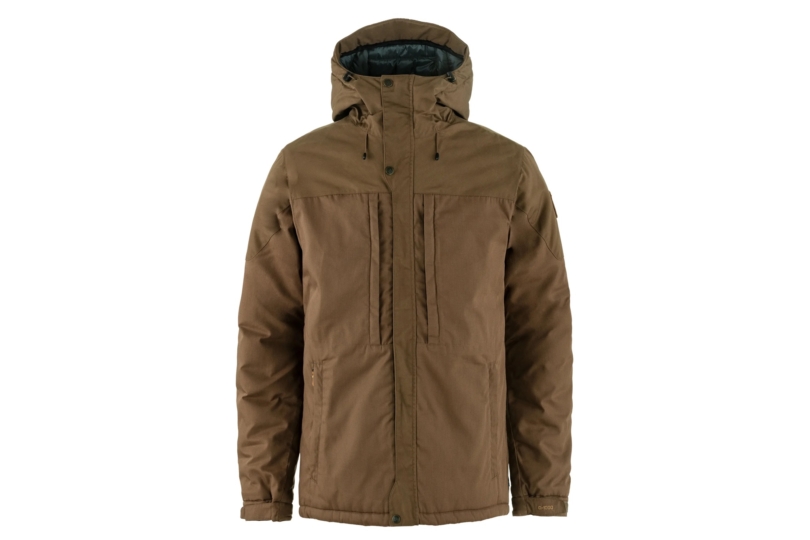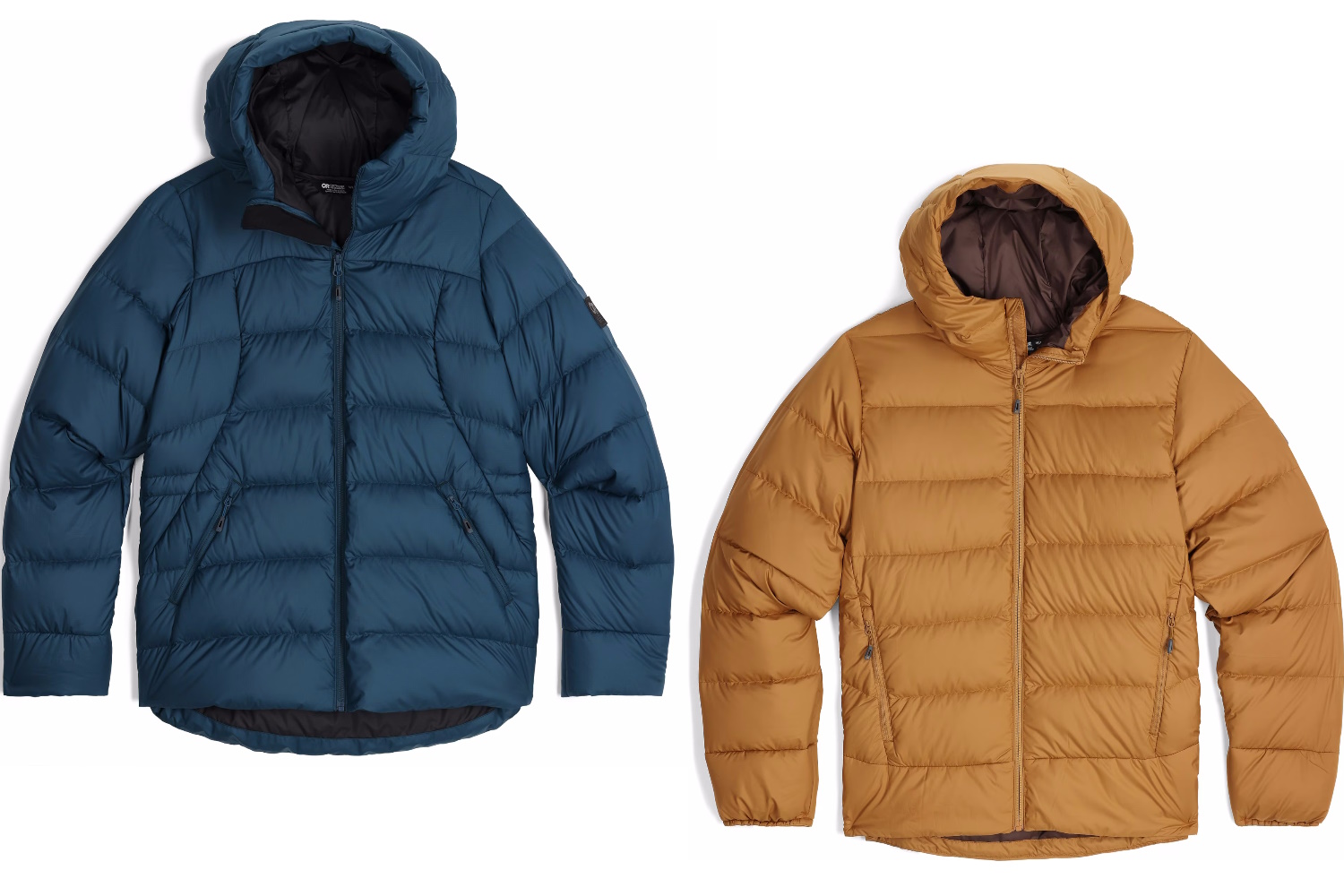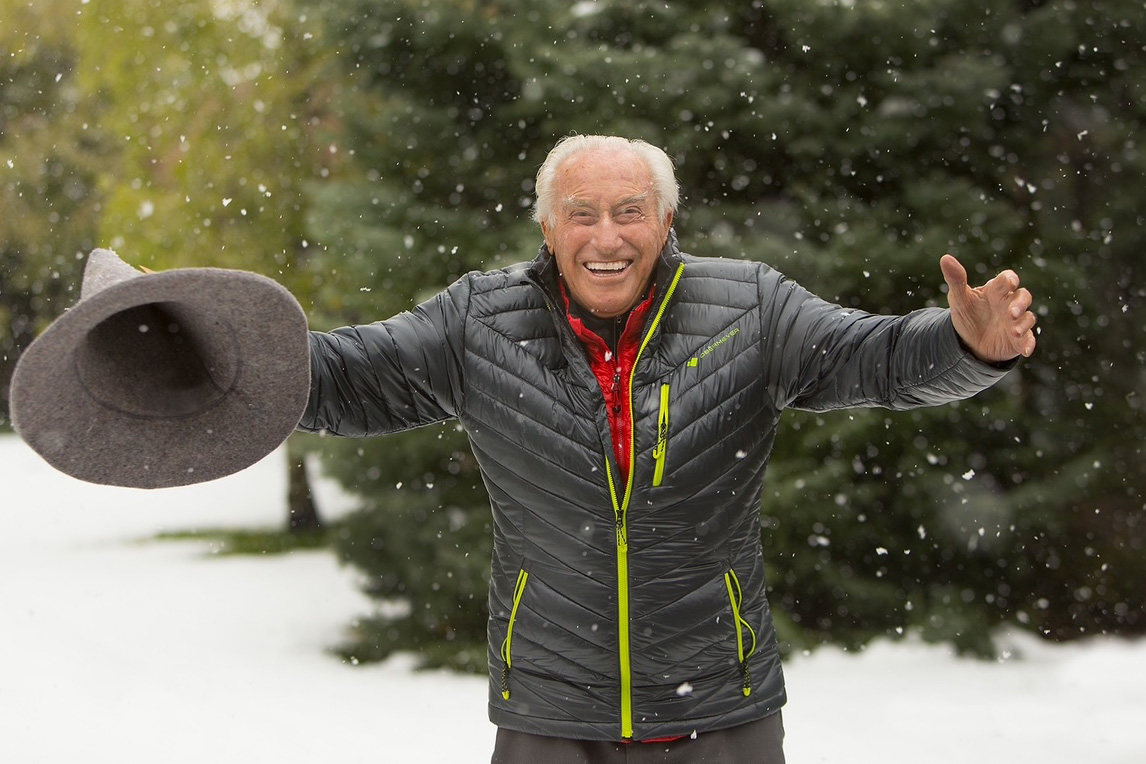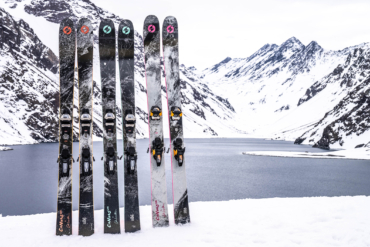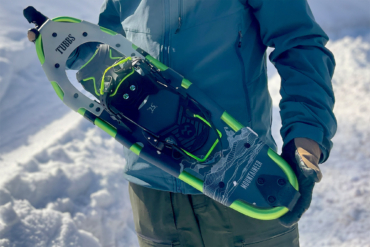Our team of winter warriors has spent many seasons testing the best winter jackets on the market in search of the warmest and most versatile styles. This year alone, we researched dozens of models before selecting the best styles to include in this Guide. After extensive hands-on testing in the frigid Rocky Mountain, Sierra Nevada, and Midwestern climates, we’re happy to bring you our selections for the best winter jackets of 2025.
From stylish and streamlined thigh-length coats to sporty and practical expedition-weight parkas, we’ll help you find the right winter jacket for you, no matter your climate, style, budget, or intended use. We tested these winter jackets in the same types of everyday scenarios you’re likely to face.
If you’re simply looking for the best, the Patagonia Stormshadow Parka is our top pick with premium materials and construction quality. The versatile and budget-friendly REI Co-op Stormhenge Down Hybrid Parka proves you don’t have to spend the big bucks to stay warm and look good this winter.
Editor’s Note: We updated our Winter Jackets guide on November 6, 2025, to add the Fjällräven Greenland Jacket and update our recommendation of the Arc’teryx Atom SV (which has a new name and a PFAS-free DWR finish now). We have also added new detailed ratings to each jacket to better aid your decision-making.
The Best Winter Jackets of 2025
Patagonia Stormshadow Parka
-
Warmth
8.0
-
Fit
7.0
-
Style
6.0
-
Durability
8.0
- Measured Weight: 2 lbs., 8.8 oz.
- Insulation: 700-fill 100% recycled down
- Outer Material: 75D 2-Layer GORE-TEX 100% recycled polyester
- Waterproof: Yes
- Center Back Length: 32"
Pros
- Excellent warmth and loft
- Fully waterproof GORE-TEX membrane
- Includes dual front zippers with dual storm flaps
- Includes draft tubes at neck and hem
- Simple, classic style
Cons
- Expensive
- Not the most stylish
REI Co-op Stormhenge Down Hydrid Parka
-
Warmth
7.0
-
Fit
7.0
-
Style
6.0
-
Durability
7.0
- Measured Weight: 2 lbs., 3.2 oz.
- Insulation: 850-fill Bluesign-approved down, 80 & 180g polyester
- Outer material: 2-layer HydroWall recycled nylon
- Waterproof: Yes
- Center back length: 35.5"
Pros
- Great warmth and protection for the weight
- Great price and value
- Includes 5 total pockets (2 hand-warmer, 1 external chest, 1 internal chest, 1 internal stash)
- Includes two-way waterproof zipper, elastic cuffs, and hood and hem adjustments
Cons
- Extended length can feel a bit bulky
The North Face McMurdo Down Parka
-
Warmth
7.0
-
Fit
7.0
-
Style
8.0
-
Durability
8.0
- Measured Weight: 3 lbs., 8.8 oz.
- Insulation: 600-fill recycled down
- Outer Material: 70D x 160D 2-layer DryVent 100% recycled nylon
- Waterproof: Yes
- Center Back Length: 32"
Pros
- Good warmth and protection for the price
- Versatile and sporty style
- Includes 7 total pockets (2 zippered hand pockets, 2 external cargo pockets, 2 external chest pockets, 1 internal chest pocket)
- Two-way front zipper with storm flap
Cons
- Heavy
- Hand pockets are at a weird angle
Patagonia Jackson Glacier Parka
-
Warmth
7.0
-
Fit
8.0
-
Style
7.0
-
Durability
7.0
- Measured Weight: 2 lbs., 11.4 oz.
- Insulation: 700-fill-power 100% recycled down
- Outer Material: 100% recycled polyester plain weave
- Waterproof: Yes, Patagonia 2-layer H2No
- Center Back: 36"
Pros
- Classic design is simple and sleek
- Great warmth at a reasonably light weight
- Full-length (mid-thigh) waterproof protection
- Excellent construction quality
- Minimal logos or other aesthetic distractions
Cons
- Only three total pockets
- Main zipper can be a little finicky
- A little pricey
Fjällräven Nuuk Parka
-
Warmth
7.0
-
Fit
7.0
-
Style
8.0
-
Durability
7.0
- Measured Weight: 4 lbs., 1.1 oz.
- Insulation: 250g Supreme Micro Loft (synthetic)
- Outer Material: 100% recycled polamide
- Waterproof: Yes
- Center Back: 35"
Pros
- Best and most pockets of any jacket we tested
- Great protection with long coverage and oversized hood
- Very warm
- Stylish design
Cons
- Heavy and bulky
- Fit is a bit large
Patagonia Tres 3-in-1 Parka
-
Warmth
7.0
-
Fit
7.0
-
Style
7.0
-
Durability
8.0
- Measured Weight: 2 lbs., 14.9 oz.
- Insulation: 700-fill 100% recycled down
- Outer Material: 150D 2-layer H2No 100% recycled polyester
- Waterproof: Yes
- Center Back Length: 33"
Pros
- 3-in-1 versatility; includes removable down jacket
- Burly 150D outer material with H2No waterproof membrane
- Sleek style and fit
- Includes dual front zippers with dual storm flaps
- Includes adjustable zip-off hood
Cons
- Fairly expensive
- Hood is not insulated
- Somewhat heavy
Arc’teryx Atom SV Insulated Hoody
-
Warmth
6.0
-
Fit
7.0
-
Style
7.0
-
Durability
7.0
- Insulation: Arc’teryx Coreloft 120 Insulation
- Weight: 1 lb.
- Key features: Athletic fit, helmet-compatible hood, two zippered hand pockets, one zippered chest pocket
- Pockets: 3
- Shell fabric: Tyono 30-denier shell with DWR treatment, 100% nylon
Pros
- Relatively breathable for such a warm jacket
- Stylish
- Durable
- Exceptionally warm
Cons
- Runs a bit small
- No internal dump pockets
More Great Winter Jackets We Tested
We tested nearly 30 different winter jackets throughout the past three seasons, regularly adding new models to our rotation each winter. In addition to the seven Top Pick winners above, the following jackets are additional standouts we liked that we think you should consider.
-
Warmth
7.0
-
Fit
6.0
-
Style
7.0
-
Durability
9.0
- Measured weight: 2 lbs., 14.6 oz.
- Insulation: 700-fill responsibly sourced down
- Outer material: 150D 2-Layer GORE-TEX 100% polyester canvas
- Waterproof: Yes
- Center back length: 35"
Pros
- Highly protective with GORE-TEX membrane and 150D outer material
- Includes 8 total pockets
- Includes dual front zippers and dual storm flaps
- Adjustable hem and adjustable hood
Cons
- Fits large — we had to go down one size
- Not as warm as similar styles
- Dual hand pockets have awkward entry angles
-
Warmth
5.0
-
Fit
7.0
-
Style
7.0
-
Durability
7.0
- Measured Weight: 1 lb., 10.5 oz.
- Insulation: None
- Outer Material: G-1000 65% polyester (recycled), 35% cotton
- Waterproof: No, can be treated with Greenland wax
- Center Back: 31"
Pros
- Protective and durable G-1000 material
- Uninsulated to add different jackets for different conditions
- Can be treated with waterproofing wax
- Price compared to other fully insulated jackets
Cons
- Heavy for a shell
- Tough to get packed small
-
Warmth
7.0
-
Fit
7.0
-
Style
7.0
-
Durability
7.0
- Measured Weight: 3 lbs., 10 oz.
- Insulation: Allied Feather & Down 480 fill-power; 60% duck down, 40% duck feather
- Outer Material: 100% Polyamide, HELLY TECH Professional 2-layer fabric layer system
- Waterproof: Yes
- Center Back Length: 30"
Pros
- Life Pocket insulates your phone
- 3-way adjustable hood
- Comfy internal cuffs
- Very durable
Cons
- Heavy
- Hand warmer pockets are uninsulated
- No DWR treatment
-
Warmth
6.0
-
Fit
7.0
-
Style
8.0
-
Durability
8.0
- Measured Weight: 2 lbs., 5 oz.
- Insulation: PrimaLoft Black
- Outer Material: G-1000 Lite 65% polyester/35% cotton
- Waterproof: No, can be treated with Greenland wax
- Center Back: 31.8” (size m)
Pros
- Tough as nails
- Stylish
- Synthetic insulation remains warm when wet
Cons
- Needs wax treatment to maintain waterproofness
- Thick shell fabric isn’t very packable
- Lightly insulated
-
Warmth
7.0
-
Fit
7.0
-
Style
7.0
-
Durability
6.0
- Measured Weight: 1 lb., 4.6 oz.
- Insulation: 700-fill RDS-approved down, 85% recycled VerticalX ECO
- Outer Material: 53% recycled Pertex Quantum Eco
- Waterproof: No
- Center Back Length: 29"
Pros
- Good warmth to weight ratio
- Includes fleece-lined hand-warmer pockets and two internal stash pockets
- Includes hem and hood adjustments
- Classic styling
- Reasonable price
Cons
- Not as warm or protective as heavier parkas
- Not waterproof
-
Warmth
7.0
-
Fit
7.0
-
Style
7.0
-
Durability
6.0
- Measured Weight: 4 lbs., 1.3 oz.
- Insulation: 650-fill RDS-certified down
- Outer Material: WeatherEdge 100% recycled nylon
- Waterproof: Yes
- Center Back Length: 33"
Pros
- Good warmth and weather protection
- Includes two-way front zippers with dual storm flaps
- Includes 7 total pockets (2 zippered hand, 2 external cargo, 2 external chest, 1 internal zippered)
- Reasonable price tag
Cons
- Much heavier than similar models
- Hand pockets are at an awkward angle
Best Winter Jackets Comparison Chart
| Winter Jacket | Price | Weight (size M) | Waterproof | Insulation | Outer Material |
|---|---|---|---|---|---|
| Patagonia Stormshadow Parka | $899 | 2 lbs., 8.8 oz. | Yes | 700-fill 100% recycled down | 75D 2-layer GORE-TEX 100% recycled polyester |
| REI Co-op Stormhenge Down Hybrid Parka | $299 | 2 lbs., 3.2 oz. | Yes | 850-fill Bluesign-approved down, 80 & 180g polyester | 2-layer HydroWall recycled nylon |
| TNF McMurdo Down Parka | $400 | 3 lbs., 8.8 oz. | Yes | 600-fill recycled down | 70D x 160D 2-layer DryVent 100% recycled nylon |
| Patagonia Jackson Glacier Parka | $599 | 2 lbs., 11.4 oz. | Yes | 700-fill-power 100% recycled down | 100% recycled polyester plain weave |
| Fjällräven Nuuk Parka | $500 | 4 lbs., 1.1 oz. | Yes | 250g Supreme Micro Loft (synthetic) | 100% recycled polyamide |
| Patagonia Tres 3-in-1 Parka | $699 | 2 lbs., 14.9 oz. | Yes | 700-fill 100% recycled down | 150D 2-layer H2No 100% recycled polyester |
| Arc’teryx Atom SV Hoody | $350 | 1 lb., 0.6 oz. | No | 100% polyester Coreloft (60, 80, & 120g) | 30D 100% nylon Tyono |
| Outdoor Research Stormcraft Down Parka | $595 | 2 lbs., 14.6 oz. | Yes | 700-fill responsibly sourced down | GORE-TEX 2L 100% polyester 150D canvas shell |
| Fjällräven Greenland Jacket | $265 | 1 lb., 10.5 oz. | No | None | G-1000 65% polyester (recycled), 35% cotton |
| Helly Hansen Urban Lab Down Parka | $450 | 3 lbs., 10 oz. | Yes | 60% duck down, 40% duck feather | 100% polyamide, HELLY TECH Professional 2-layer fabric layer system |
| Fjällräven Skogsö Padded Jacket | $365 | 2 lbs., 5 oz. | No | PrimaLoft Black | G-1000 Lite 65% polyester/35% cotton |
| OR Coldfront Down Hoodie | $279 | 1 lb., 4.6 oz. | No | 700-fill RDS-approved down, 85% recycled VerticalX ECO | 53% recycled Pertex Quantum Eco |
| Eddie Bauer Superior Down Parka | $349 | 4 lbs., 1.3 oz. | Yes | 650-fill RDS-certified down | WeatherEdge 100% recycled nylon |
How We Tested the Best Winter Jackets
From cold and damp shoulder season conditions to white-out blizzards to sub-zero stretches in the thick of winter, we personally tested each of the winter jackets in this Buyer’s Guide in many of the same conditions that you’ll face this winter. Here’s a breakdown of how we measured these jackets:
- Field testing: Our winter jacket testing relies most heavily on field testing, which stretches from town to trail. During use, we consider all facets and aim to get out in the full range of weather. When possible, we pass these jackets around to multiple testers to gain a comprehensive understanding of where they excel and where they fall short.
- Water resistance testing: Outdoor testing is effective in proving waterproofing, but we also subject each of these jackets to a 10-minute shower test to ensure they withstand moisture. We pay close attention to common entry points such as shoulder seams, zippers, and wrist cuffs.
- Our winter jacket rating system:
- Warmth: Weighted 30%. Defense against the cold is our primary concern in winter jackets, and we consider whether the jacket keeps us warm in temperatures above or below freezing, as well as when it’s wet.
- Fit: Weighted 30%. Does the jacket have a long drop tail for warmth and protection? Do the sleeves sit well on the wrists? Is the sizing block appropriate compared to similar jackets?
- Style: Weighted 20%. While subjective, we crowdsource opinions on the style of these jackets to get a relative feel of how fashion-forward they are. Would you wear this jacket to the office? Around town?
- Durability: Weighted 20%. After a solid winter’s worth of use, we tally up the wear that these jackets have accumulated. Do the zippers run smoothly? Has the jacket been stained? Has it lost any loft?

Our Expert Testers
Our lead winter jacket tester is year-round Lake Tahoe resident Nick Bruckbauer. Nick grew up in the great state of Wisconsin, where it’s not uncommon to see cars driving on frozen lakes in the winter, nor is it out of the question to get a freak blizzard in the month of May.
After living in Santa Barbara, Calif., for over 10 years in his 20s and 30s, he decided he’d had enough sunshine and paradise, and moved to Lake Tahoe in late 2020, just in time to experience Tahoe’s snowiest season on record in 2022-2023. Now, Nick spends his winters skiing, shoveling and plowing snow, walking the dog, and sitting by the fire, and spends his summers swimming, paddling, running, hiking, and splitting wood to prepare for winter.
Matt Bento resides in the Eastern Sierra town of Bishop, Calif. He spends his summers rock climbing and trail running in the nearby mountains, and spends his winter skiing up the road at Mammoth Mountain Resort. Matt doesn’t let cold or snowy weather interrupt his adventures, so he’s always on the lookout for the best winter jackets to keep him cozy before, during, and after each outing.
Our Testing Process and Testing Grounds
During our systematic testing process, we paid careful attention to overall warmth and insulation quality, fit and comfort, weather protection, functionality, and style. From daily city commutes in Minneapolis to mountaineering expeditions in the Tetons and plowing snow in Lake Tahoe, we’ve put dozens of winter jackets through the wringer to help guide you in your product research and purchase decision.
Similarly, our teams have tested the best winter jackets for women, and other winter necessities like the best winter boots, the best down puffies, and the best winter gloves and mittens.
In addition to Lake Tahoe, our GearJunkie testing team has expert testers on hand who dwell in the frigid Rocky Mountains of Colorado and Wyoming, the snowy Eastern Sierra of California, and the frozen midwestern plains of Minnesota. We live, work, and play in regions known for seriously cold winters, and we put each of these winter jackets to the test in many of the same conditions that you might face.
Buyer’s Guide: How to Choose the Best Men’s Winter Jacket

The term “winter jacket” is very broad and should really be divided into a few key subcategories depending on your climate and intended use. In this Buyer’s Guide, we focused primarily on winter jackets ideal for everyday use in cold to moderately cold climates. We also included a few lighter-weight pieces that are more specific for active uses or milder climates.
Types of Winter Jackets
Everyday Use
Winter jackets made for everyday use are ideal for casual daily wear in cold climates, and can be used for low-intensity activities like commuting to work or school, running errands around town, walking the dog, or going out to dinner.
Typically, these jackets have plenty of insulation and are made from heavier materials that prioritize warmth, protection, and features. Because of this, they are more likely to restrict dynamic movement and are less likely to breathe well, making them poor choices for high-output activities like running or hiking.
Everyday winter jackets often include plenty of comfort-oriented features like cozy wrist cuffs, draft collars around the neck, fleece-lined hand pockets, and adjustable hems and hoods. They also typically have plenty of pockets to carry your wallet, keys, phone, or other necessities.
These features inevitably add a little bit to the jacket’s weight, but for casual everyday use, the benefits of the added comfort and convenience outweigh any minor additional weight. The Fjällräven Nuuk Parka has the most features of any winter coat we tested, but it is also among the heaviest.
Our top-ranked winter jacket — the Patagonia Stormshadow Down Parka — is very warm and puffy with plenty of 700-fill down insulation and boasts a waterproof GORE-TEX shell. It also has a simple and classic style that makes it great for daily wear around town, and is light enough that it could be used for more technical uses like cold-weather camping or hiking.
For simpler, lightweight options great for daily use when it’s not quite as cold, consider the Outdoor Research Coldfront Down Hoodie, which has a relaxed fit that makes it versatile for a variety of uses.

Performance Use
While everyday winter jackets prioritize warmth, protection, and convenient features, performance-oriented winter jackets will often balance warmth and protection with a lighter-weight design and more specific technical features aimed at active uses like running, hiking, or cross-country skiing.
These jackets will often have loftier down and lighter shell materials in order to save weight and make them more compressible for stuffing into a duffel bag or backpack, and will usually have a more fitted style that allows more body movement with less restriction.
Most everyday winter jackets and parkas use 600- to 700-fill-power down insulation and burly 75- to 150-denier shell materials, while performance-oriented winter jackets will often use loftier 800- to 1000-fill-power down or high-tech synthetic insulation, and will have thinner 7- to 30-denier shell materials.
Performance jackets often have fewer pockets, but will include features like dual zippers to accommodate wearing a climbing harness, and either a fitted hood to wear under a climbing helmet, or an oversized helmet-compatible hood.
Performance-use jackets typically have very breathable materials designed to dump extra heat and dry quickly, so you don’t have to remove the jacket during vigorous activity. Many will have synthetic insulation that breathes a little better than down and will retain its insulating properties even when wet from external moisture or perspiration. These jackets will usually have a water-resistant finish but will not be fully waterproof, so most people will also bring along a thin, non-insulated waterproof shell jacket.
The Arc’teryx Atom SV Insulated Hoody weighs just 16.6 ounces with its lightweight and breathable 30-denier nylon shell and Coreloft synthetic insulation, making it ideal fast paced activities like cross-country skiing or hiking.
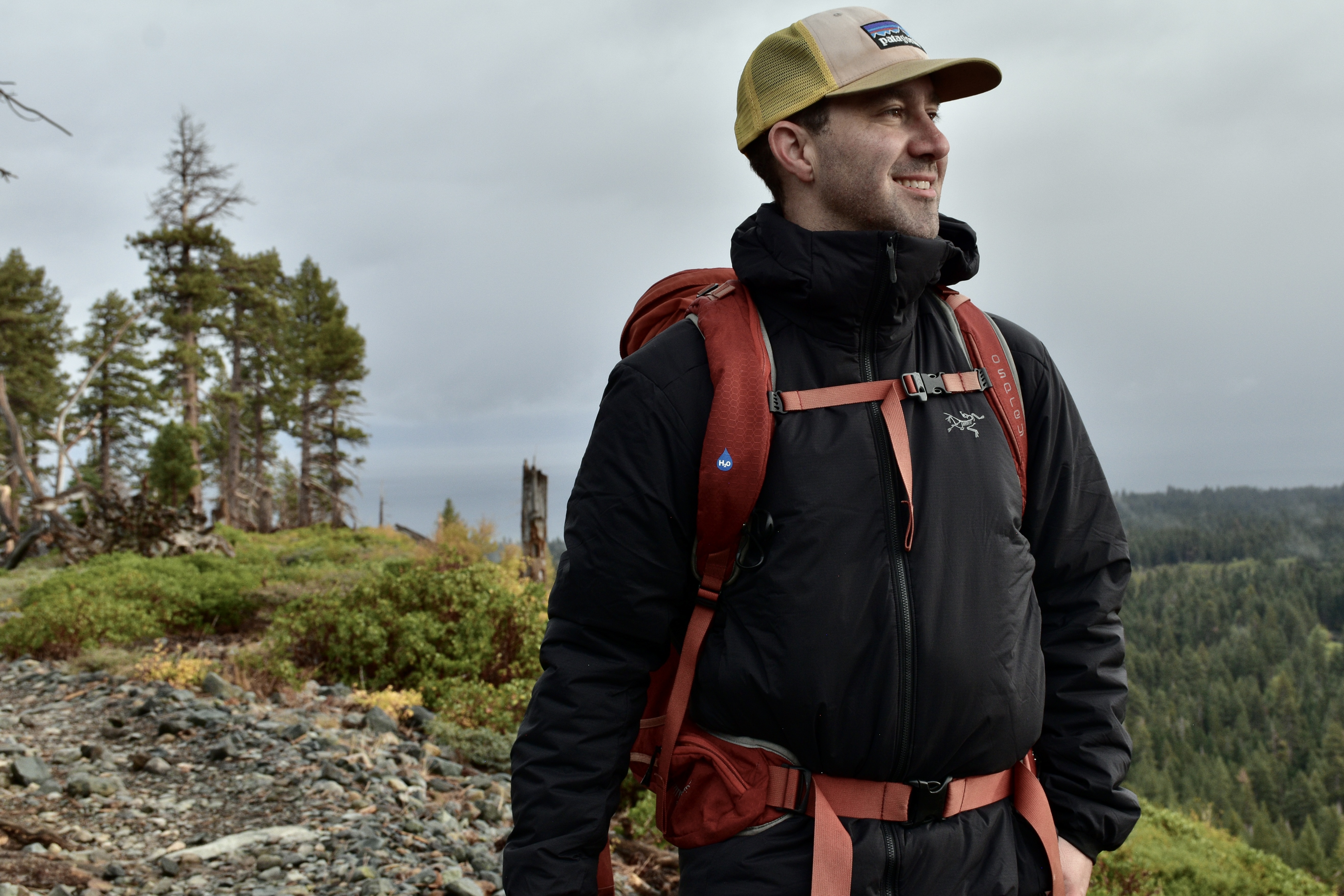
We also like the Rab Cubit Stretchdown Hooded Jacket (18.7 ounces) and the Outdoor Research Coldfront Down Hoodie (20.6 ounces) as versatile choices that blur the line between daily wear and technical use. Both of these jackets are warm enough for daily use in milder winter weather (down to about 25 degrees Fahrenheit), but also have simple, lightweight designs that also make them suitable for more active use.
And while they are both insulated with 700-fill down, they both have features to help protect against moisture. The Cubit Stretch has its down protected by a Nikwax hydrophobic finish, and the Coldfront has VerticalX ECO synthetic insulation in body areas that are more prone to moisture.
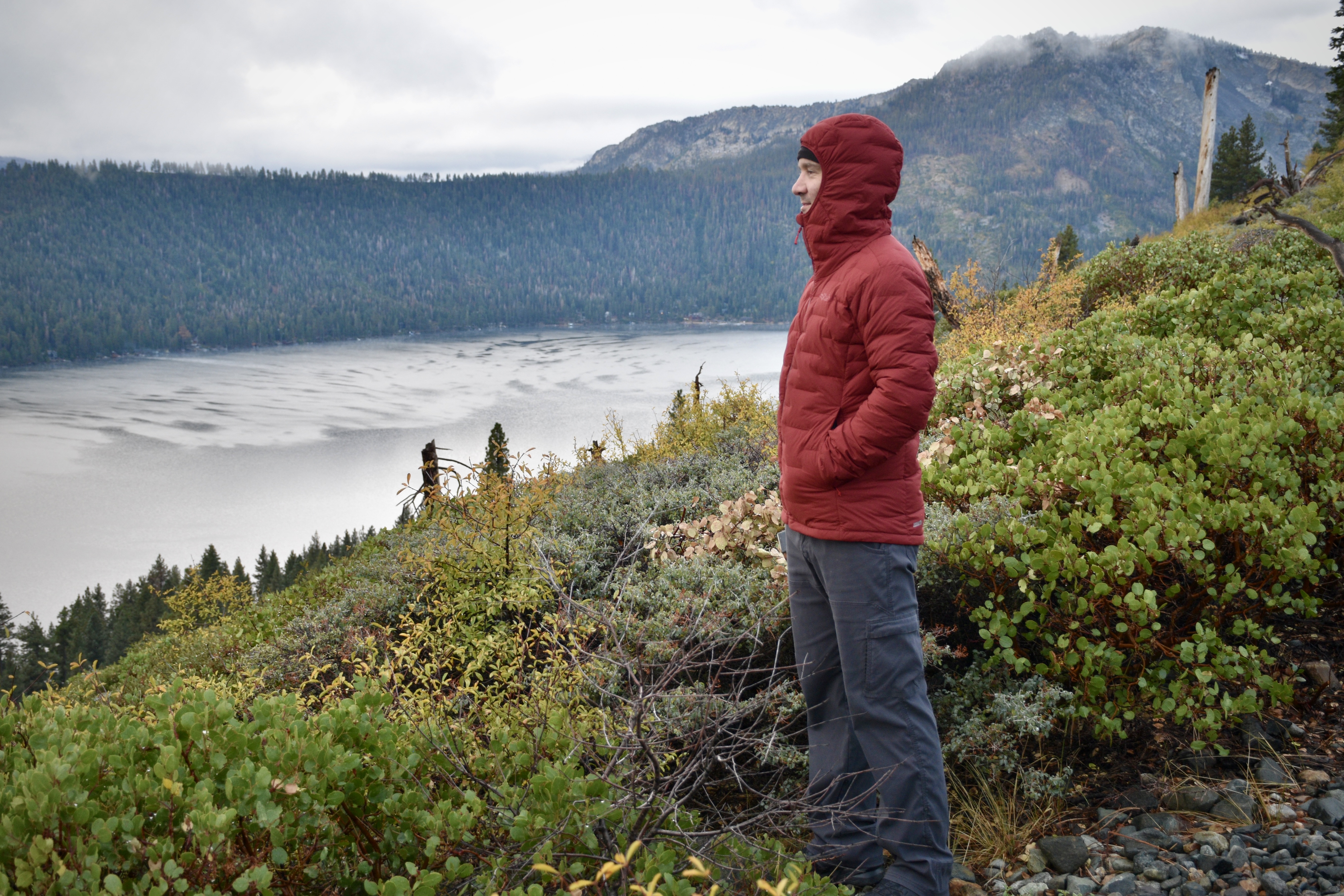
Shell Jackets
Shell jackets are designed to protect you from harsh weather conditions. Like wearable shields that defend against wind and rain, hard shells are meant to be your outermost layer. Skiers, climbers, and mountaineers hard shells for their windproof and waterproof protection, and will usually wear a shell as part of a multilayer system that may include a base layer, an insulated mid layer, and a waterproof out shell. Depending on where you live, a burly hard shell may be the most sensible winter jacket option.
Many of the winter jackets that we tested include a waterproof outer layer, making an additional shell jacket unnecessary. The Patagonia Stormshadow and the Outdoor Research Stormcraft all use down insulation shielded by a waterproof/breathable GORE-TEX. This combination provides the best blend of warmth and protection that is ideal for everyday use in cold climates, but is not as versatile as a multilayer system for changing weather conditions.
Other winter coats like the REI Co-op Stormhenge, the Patagonia Tres 3-in-1, the Patagonia Jackson Glacier, and The North Face McMurdo have proprietary waterproof shell materials made by their respective companies. While these materials provide waterproof and breathable protection, their performance specifications aren’t as well-documented as that of GORE-TEX. For general daily use in normal winter conditions, we had no issues with the waterproof performance of these jackets.
Some models, like the Patagonia Tres 3-in-1 Parka, include a removable inner insulated jacket and an outer waterproof shell jacket. Depending on the conditions, each respective jacket can be worn independently, or the inner jacket can be zipped and snapped into the outer jacket for the ultimate warmth and protection.

Warmth and Insulation
When considering a new winter jacket, overall warmth is obviously one of the most important factors to consider. All of the jackets that we tested contain either down or synthetic insulation, or both. It’s hard to definitely compare overall jacket warmth and comfort since these features are so user-dependent and can be influenced by the wearer’s gender, body type, activity level, and whether they typically run hotter or colder.
Having said that, three jackets that we tested stand out for their exceptional warmth: the Patagonia Stormshadow, the Fjällräven Nuuk Parka, and The North Face McMurdo. Each of these jackets has a large amount of down insulation protected by a waterproof shell material, providing the ultimate combination of warmth and weather protection.
The Stormshadow is pretty pricey with its combination of down insulation and a GORE-TEX shell. So, if you’re looking for luxurious warmth without breaking the bank, the McMurdo and the Nuuk are great options.
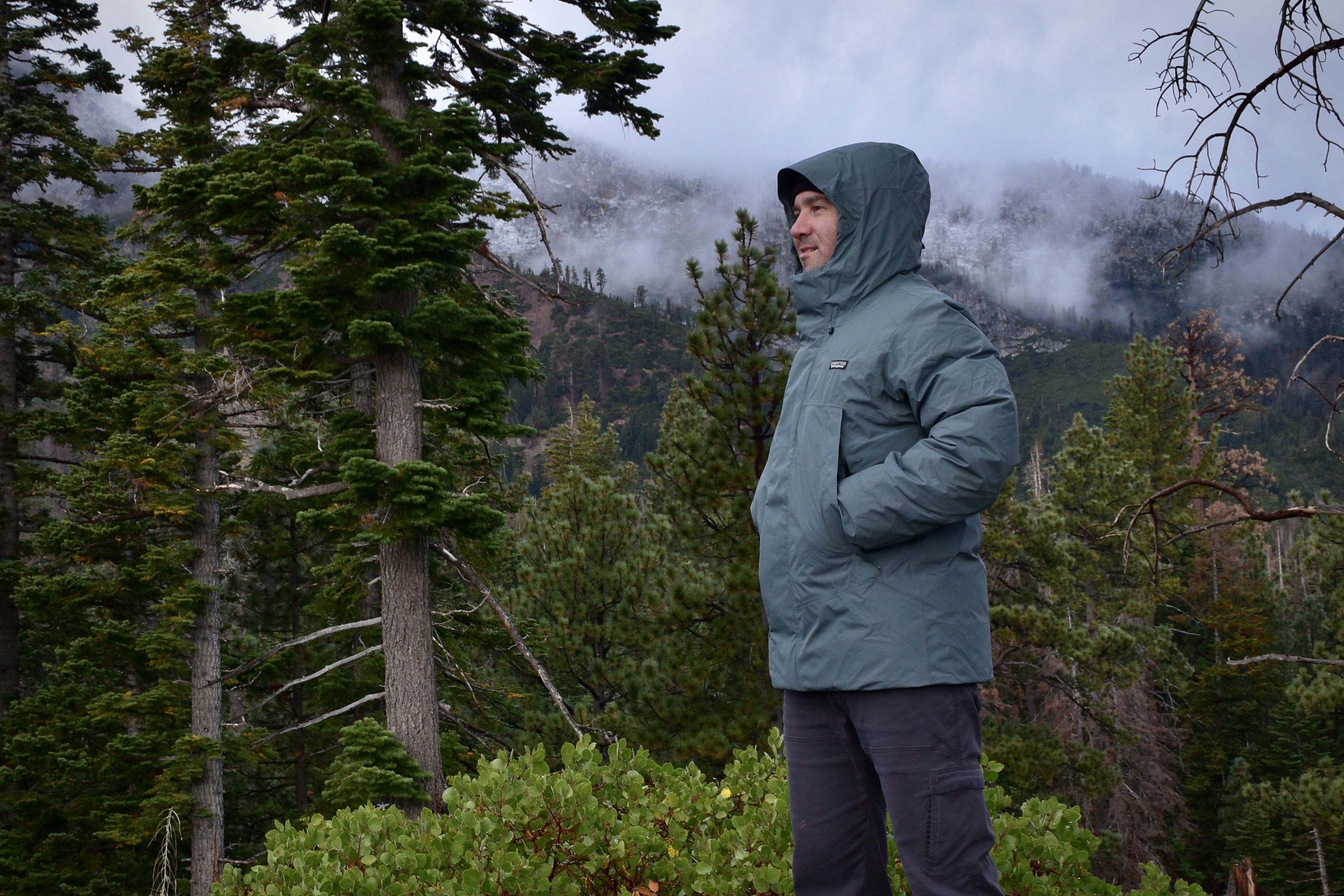
Down Insulation
Made of goose or duck plumage, down is the warmest, lightest, and most compressible type of insulation on the planet. Almost all of the winter jackets that we tested for this buyer’s guide are insulated with down. When considering the warmth-to-weight balance, down continues to be better insulation than any human-made alternative. However, due to a few key drawbacks, down does require careful ownership and handling.
Down insulation works by trapping warm air in the small spaces between the down feathers. However, down insulation does not repel water, and it loses its fluffy loft — and thus loses most of its insulation properties — when it gets wet.
To combat this, many down jackets treat the down with a hydrophobic coating, or add a waterproof or water-repellant outer shell fabric. Some models also will strategically replace the down with synthetic insulation in specific areas of the body — like the shoulders or arms —that are prone to moisture from your body.
Synthetic Insulation
Synthetic insulation is designed to replicate the lightweight insulation down and retain its performance when wet. The quality of synthetic insulation is constantly improving, but it still generally lags behind down in its overall warmth-to-weight ratio.
Synthetic insulation is typically not as compressible as down, and can lose its loft or fluffiness over time. For those on a budget, synthetic insulated jackets are usually more affordable than down. The Fjällräven Nuuk Parka is the warmest winter coat we tested with synthetic insulation.
The main benefit of synthetic insulation is that it’s far more resistant to moisture than down. Even when synthetic insulation does become wet, it still provides a reasonable percentage of its ultimate warmth. Synthetic insulation also dries quickly, especially when exposed to wind and sun.
This makes synthetic insulation popular for performance-oriented winter jackets where an active user will likely be producing a lot of heat and potential moisture from sweat. The Arc’teryx Atom SV Insulated Hoody is insulated with synthetic Coreloft insulation and is a great choice for active pursuits.
If you know you’ll be wearing your winter jacket in soggy environments such as the Pacific Northwest, consider purchasing a synthetic-filled jacket instead of down.

Fill Power and Fill Weight
The overall warmth of a down jacket is generally a function of the fill power and the fill weight of the down insulation that is used. Fill power represents a volume-to-weight ratio (expressed in cubic inches per ounce), and fill weight represents weight (in ounces). By multiplying the fill power by the fill weight, you can get an overall volume of insulation.
Keep in mind that other factors like jacket materials, fit, and baffle shape, size, and construction can also impact the overall warmth of a jacket.
Fill Power
Fill power is a technical specification that generally refers to the quality or loftiness of down insulation. This is determined by a standardized lab test that calculates the volume (in cubic inches) taken up by 1 ounce of down. A higher fill power number means that the down has greater loft (meaning it’s fluffier or puffier), which means that it will have better thermal efficiency and provide a better warmth-to-weight ratio.
Keep in mind that a higher fill power does not automatically mean that a jacket will be warmer. It just means that it uses loftier down insulation that will be able to provide better thermal efficiency and warmth at a lighter weight.
Most down jackets — including all of the winter jackets that we tested for this Buyer’s Guide — will have a fill power rating somewhere between 600 and 900. Casual-wear down jackets generally have a fill power rating between 600 and 750, while high-end performance jackets will have a fill power rating of 750 to 900 or higher.
Of the winter jackets that we tested for this Buyer’s Guide, the REI Co-op Stormhenge has the highest fill power rating at 850, and The North Face McMurdo has the lowest fill power rating at 600. However, the McMurdo is warmer overall than the Stormhenge but weighs almost a pound and a half more. The McMurdo weighs 3 pounds, 8.8 ounces, compared to the Stormhenge at 1 pound, 14.3 ounces.

Some ultralight down jackets today use insulation with a fill power rating of 1000. Keep in mind that this value only represents a warmth-to-weight ratio and not the overall warmth of a jacket. Jackets with a fill power rating between 900 and 1,000 will typically weigh 10 ounces or less and are intended for fast and light technical pursuits. These down jackets will not be nearly as warm as any of the winter jackets in this buyer’s guide, but will be much lighter and more packable.
Fill Weight
As its name suggests, fill weight refers to the total weight of the down insulation inside a jacket. While fill power is often marketed more prominently than fill weight, both are equally important to the performance of a jacket.
All other factors being equal like jacket materials, fit, and baffle construction, a jacket with 5 ounces of 700-fill-power down (total volume of 5 x 700 = 3,500 cubic inches) will likely be warmer than a jacket with 3 ounces of 900-fill-power down (total volume of 3 x 900 = 2,700 cubic inches), but it will weigh more and be less compressible.
The higher the fill power (quality or loftiness), the less fill weight is needed to create the same relative warmth. This is because the higher-loft down takes up more volume per ounce and is able to trap more air and warmth than a lower fill-power down.
A jacket with 4 ounces of 900-fill-power down (total volume of 4 x 900 = 3,600 cubic inches) and a jacket with 6 ounces of 600-fill-power down (total volume of 6 x 600 = 3,600 cubic inches) should have about the same warmth, but the 900-fill-power down jacket will be lighter, more compressible, and likely more expensive.
Down jackets are typically available with anywhere between 4 ounces and 20 ounces of fill weight. Comparing fill weight is most useful when all jackets in question have a similar fill power rating.
Weather Protection
While warmth is typically the top consideration when looking for a winter jacket, protection from the elements is also vital. Cozy down or synthetic insulation will help keep you warm, but a wind or waterproof outer shell, a sufficient length, and a protective hood will help seal out cold wind, rain, and snow.
For wet conditions such as rain and sleet, prioritize a jacket with a waterproof shell. Waterproof jackets come with taped seams and heavy-duty exterior material. Jackets in this category are also great for wind protection. The Patagonia Stormshadow Parka stands out here for its waterproof GORE-TEX shell and its adjustable insulated hood.
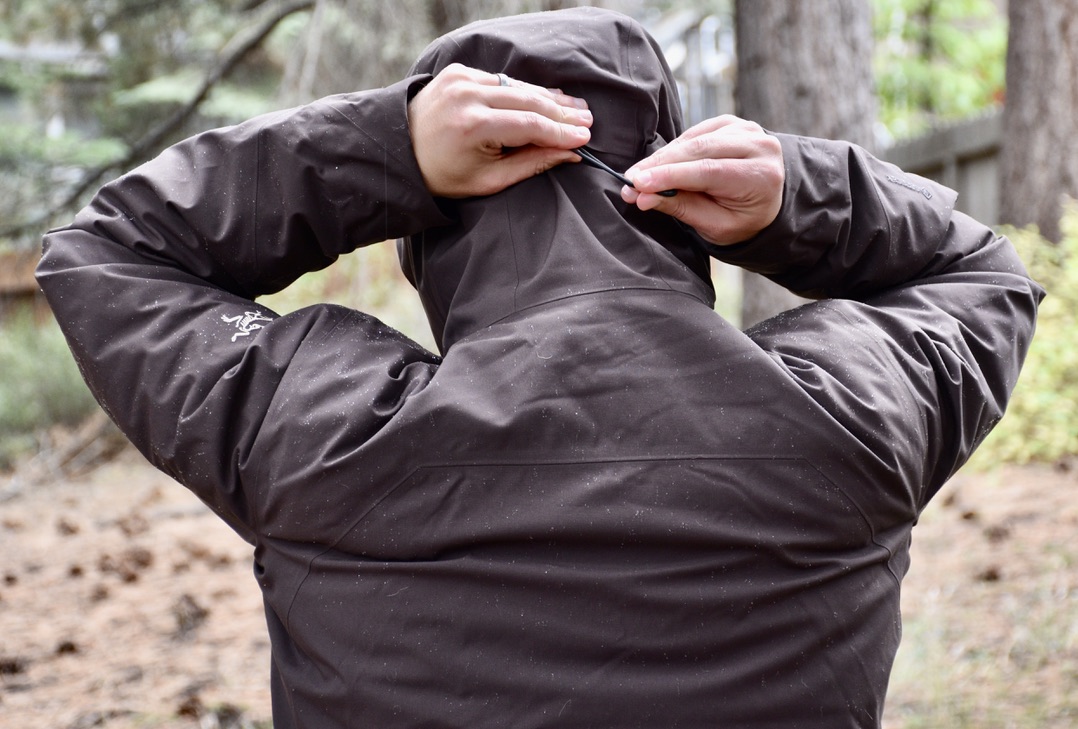
If you plan to wear your jacket in freezing conditions where it’s more likely to snow than rain, or you’ll be in a dry cold, a fully waterproof shell may not be necessary. Many highly insulated jackets, while not completely waterproof, come with a quality DWR treatment that sheds light moisture.
Features
Useful features can be the difference between a good jacket and a great jacket. Comfortable hoods, handwarmer pockets, and cuff closures are some of the winter jacket features we consider to be the most valuable. When combined, these design details add significant warmth, versatility, and protection from cold conditions
Hood
Winter jacket hoods come in a wide range of shapes and sizes. During stormy weather, a protective hood is mandatory. Well-designed hoods offer ample customization and adjustability. Additional hood features, such as a fur lining and a stiff brim, are also worth seeking out.
One of our favorites is actually the simple and cozy hood design of the Arc’teryx Atom SV Hoody. This jacket has a fitted hood with only one adjustment cord, and it’s sized to fit over a climbing or ski helmet, should you need to button down the hatches.

On the other end of the spectrum, most of the winter jackets we tested have well-insulated hoods with two front and one rear adjustment cords. This allows the user to dial in a more customized fit, and often allows the hood to be worn over a ski or climbing helmet. Note that the Patagonia Tres 3-in-1 has a non-insulated hood since it is part of the outer shell jacket.
The Eddie Bauer Superior Down Parka, the Fjällräven Nuuk Parka, and The North Face McMurdo include a removable faux fur ruff around the hood that helps protect from driving wind and precipitation.
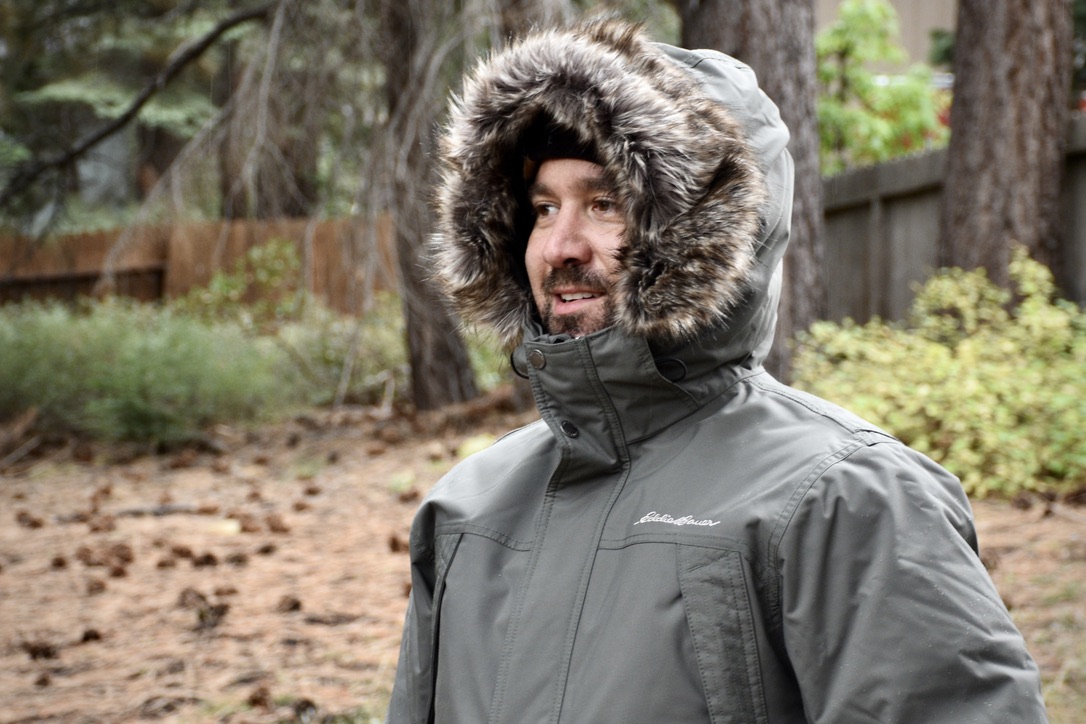
Two-Way Zippers
Two-way zippers allow you to open the front of your jacket from both the bottom and the top. In extra-long and thigh-length jackets, two-way zippers are essential for enabling leg mobility while sitting or stepping into a vehicle. On more technical jackets, a two-way zipper makes it easier to wear a climbing harness while wearing the jacket.
Most of the jackets we tested have a two-way front zipper. On full-length parkas like the Patagonia Jackson Glacier Parka and the REI Co-op Stormhenge Down Hybrid Park, the two-way front zipper allows extra mobility when sitting down or when moving around.

Pockets
All of the jackets we tested have a varying assortment of pocket designs, ranging from handwarmer pockets to external gear pockets to chest pockets to internal zippered or stash pockets. More fully featured parkas typically have the most varied and useful pockets, but this also adds to the weight of the jacket.
Lighter-weight jackets like the Outdoor Research Coldfront might be limited to hand-warmer pockets and maybe an accessory pocket or two.
The Fjällräven Nuuk Parka has the most pockets (13) out of any winter jacket we tested. There are multiple internal and external zippered and stash pockets for every type of cargo imaginable.
Hand pockets probably have the biggest impact on comfort and convenience, but not all hand pockets are created equal. Some — like the Outdoor Research Coldfront — have cozy fleece-lined hand pockets that are at just the right angle to rest your arms. But others — like the Eddie Bauer Superior Down — have oversized pockets that are at an awkward angle and aren’t as comfortable.

Cuff Closures
Cuff closures allow you to create a seal around your wrist that prevents wind and snow from entering through your sleeves, and typically include a Velcro strap or a snap attachment point. Jackets can also include interior wrist gaiters for extra warmth and soft, cozy protection. Wrist gaiters can be difficult to wear with a wristwatch or bracelet but definitely help the overall comfort.
The Eddie Bauer Superior Down Parka has some of the coziest wrist cuffs. Theirs is a soft internal gaiter that feels like a cozy sweater, and an adjustable Velcro strap on the outer cuff.
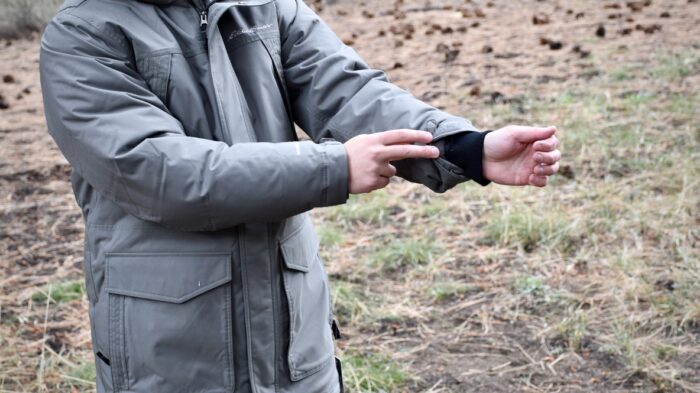
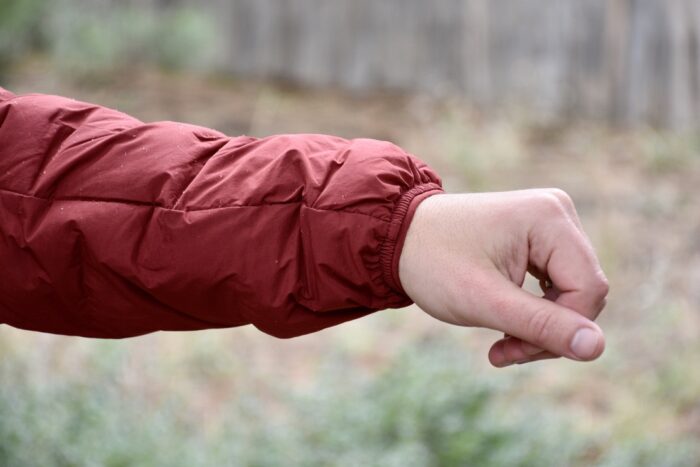
Other models have simpler cuff designs, like an elastic band that helps keep a snug fit around the wrist. This design is usually sufficient for lighter-weight jackets, but isn’t as versatile as an elastic cuff.
Price & Value
Shell material and insulation quality and quantity are the main variables that will impact the price of a winter jacket. Higher-end features like insulated hoods, fleece-lined pockets, fitted cuffs, and adjustment cords can also hike up the price. For the most part, you get what you pay for, but there are some more affordable options that perform nearly as well as their more expensive counterparts.
Budget
The most affordable jackets that we tested ($300 or less) will typically employ lower-grade materials, or will simply have less insulation or fewer features on them. The Outdoor Research Coldfront Down Hoodie ($279) is a simple, no-frills option with a relaxed fit that will keep you warm in all but the most frigid conditions. It’s not waterproof and it’s not parka length — so it’s not blizzard material — but if you’re looking for cozy puffy for general everyday wear, it’s one of our top choices.
Our best value pick — the REI Stormhenge Down Hybrid Parka ($299) — is warm, waterproof (with REI’s more affordable HydroWall material) and contains high-quality 850-fill-power down insulation. It’s not quite as warm as some heavier parkas since it weighs just less than two pounds, but it provides a great fit and excellent all-around performance.
We’ve tested the Stormhenge through three winters and consider it nearly equal to some of our favorite coats that are two to three times the price. If you’re not drawn to some of the more fashion-forward jackets from Arc’teryx or Patagonia, do yourself a favor and just buy the Stormhenge.
Mid-Tier
Spending $300 up to $600 will get you some great-looking, warm, weather-resistant jackets from top brands like Patagonia, The North Face, and Fjallraven. Here you’ll start to see proprietary waterproof breathable membranes, down with hydrophobic treatments, and extra features like fancier pockets, nicer hoods, and better construction.
The McMurdo Down Parka ($400) from The North Face is one of the warmest winter coats we’ve tested and is completely waterproof. TNF uses its proprietary DryVent waterproof/breathable material, foregoing the higher-end GORE-TEX material in order to keep the price a bit easier to swallow. Its 600 fill-power down isn’t the best warmth-to-weight ratio, but there is enough of it in the jacket that we stayed plenty toasty while testing it.
More great options in this price range include the Fjällräven Nuuk Parka ($500) with the most pockets and best features of any model we tested, the Outdoor Research Stormcraft Down Parka ($550) that is the least expensive option we tested that includes GORE-TEX material, and the sleek and stylish Patagonia Jackson Glacier Parka ($599) that is our favorite full-length parka design.
Premium
Pull out all the stops (and your wallet), and you get top-of-the-line materials, construction, features, features, and big-name brand credibility. The Patagonia Tres 3-in-1 Parka ($699) combines a waterproof shell layer with a detachable insulated layer, so for the hefty price tag, you do get three nice options to take you through the season — a shell for the warmer, wetter times, a packable puffy for when it’s cool and dry, and a full storm-ready parka for the thick of winter.
Our top overall pick, the Patagonia Stormshadow Parka ($899), is a thigh-length parka with a GORE-TEX material and thick baffles stuffed to the gills with 700-fill-power recycled down. It combines premium materials throughout with some thoughtful design details and top-notch construction quality. We have sticker shock from looking at the price tag, but we could see this jacket lasting a long time if properly cared for.
Frequently Asked Questions
Warmth is perhaps the most important consideration when choosing a winter jacket. If you’re seeking maximum warmth, you’ll want to pay attention to the length, insulation quality (fill power), and insulation quantity (fill weight).
On the fill power spectrum, any rating over around 600 can be considered a relatively high insulation value. On this list, we’ve featured jackets with a fill power rating of up to 850. When comparing jackets of equal fill power, it’s likely that the one with the greater fill weight will ultimately be warmer. The North Face McMurdo Down Parka has a relatively lower 600-fill-power rating, but is one of the warmest winter jackets that we tested, thanks to its heavier weight.
Other factors play a role in the overall warmth including baffling, cuff closures, and exterior materials. Fill weight is a good starting point for research but not the only indicator of warmth. Extra-long and thigh-length jackets will often be warmer than standard jackets of equal fill power.
The Patagonia Stormshadow and the Fjällräven Nuuk Parka are two other models that stand out for their exceptional warmth.
Some winter jackets are waterproof while others are only water-resistant. The key difference between these labels is that truly waterproof jackets have fully taped seams and a waterproof membrane. Jackets like the Patagonia Stormshadow and the Outdoor Research Stormcraft have fully waterproof GORE-TEX shells that can reliably keep you dry, even in a severe downpour.
Also, winter jackets with synthetic fill are more resistant to moisture than down, which becomes ineffective when it wets out.
It depends on your style and preferences. With that said, hoods can offer lots of protection against various weather conditions including wind, rain, and snow.
While hoods aren’t a substitute for a warm hat in terms of insulation, they are very useful — especially during storms. All of the jackets we’ve included on this list come with hoods.
Some winter jackets include hoods that are removable, which is the best of both worlds.
Winter jackets can be expensive relative to other kinds of jackets and winter clothing. On this list, we’ve included jackets that range in price from less than $300 to nearly $1,000.
Though it’s not strictly necessary to buy a top-end and expensive jacket, you should consider that higher-quality jackets often prove to be a better value in the long run.
Features such as taped seams, handwarmer pockets, durable DWR coating, and two-way zippers will increase the price of a jacket.
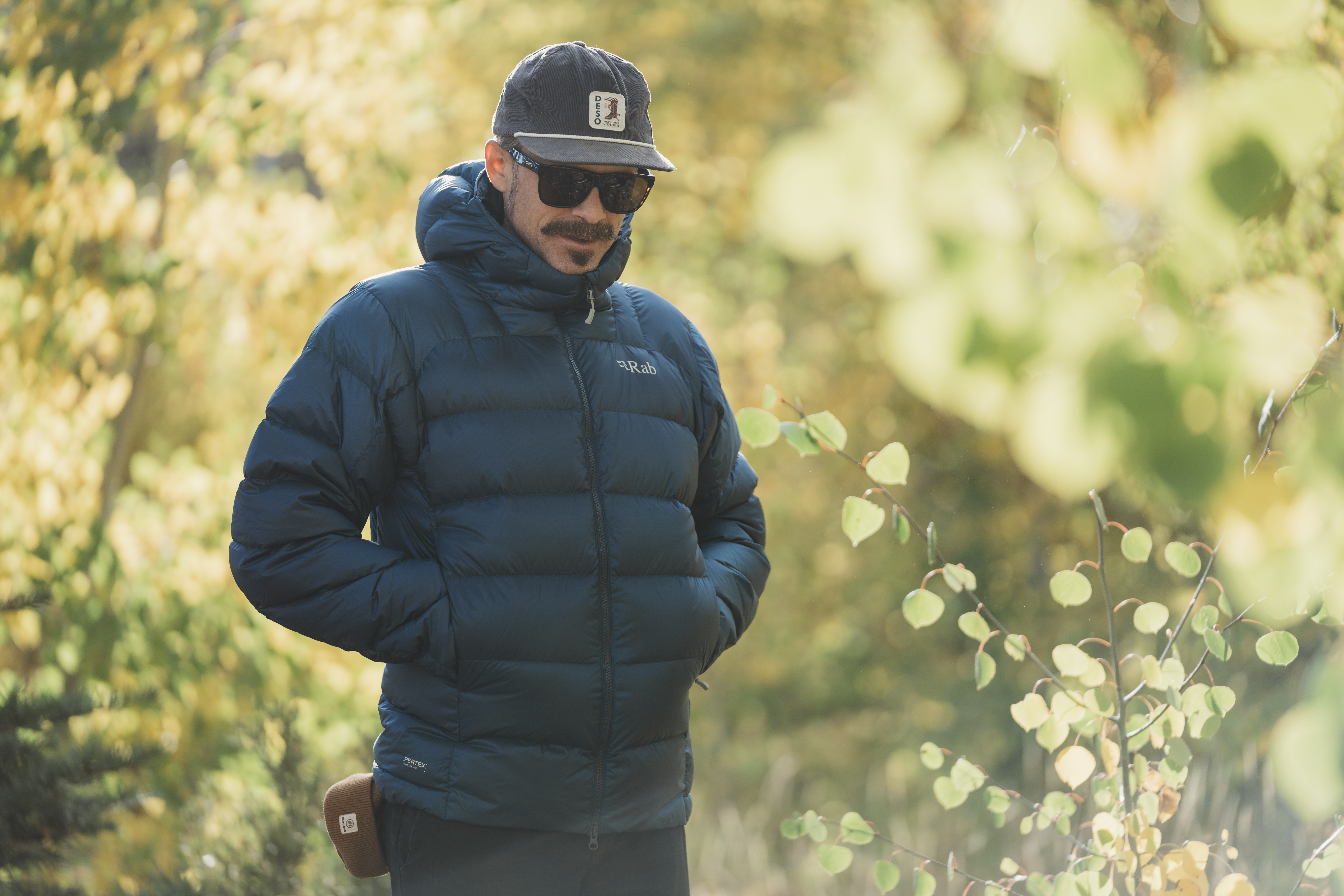
The Best Down Jackets of 2025
We tested the best down jackets from Arc’teryx, Patagonia, Mountain Hardwear, and more to help you find the right jacket for your needs and budget.

The Best Women’s Winter Jackets of 2025-2026
Whether you’re looking for a warm, stylish coat to commute in a snowstorm, spectate a hockey game, or enjoy après-ski, we’ve got you covered with the best women’s winter jackets.
